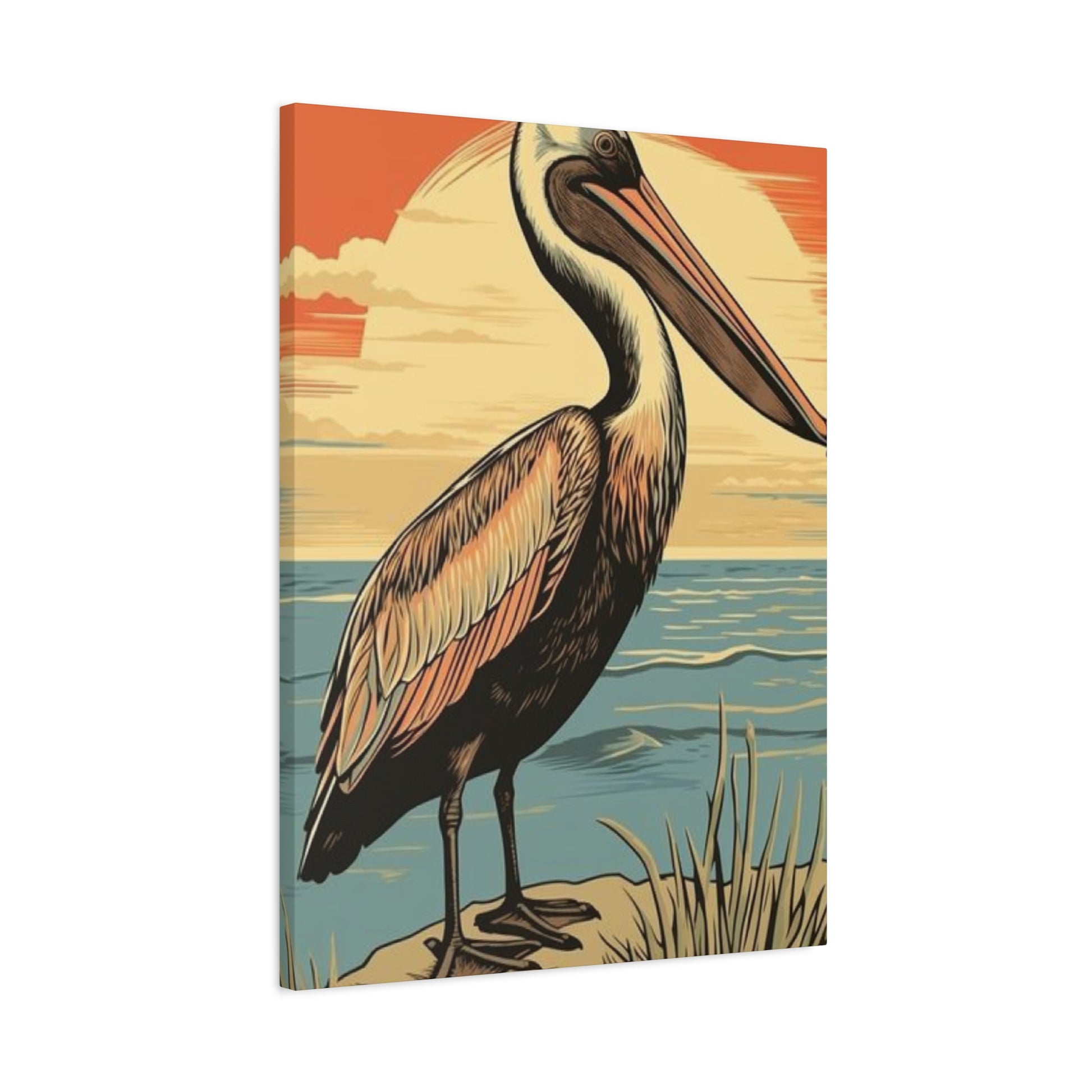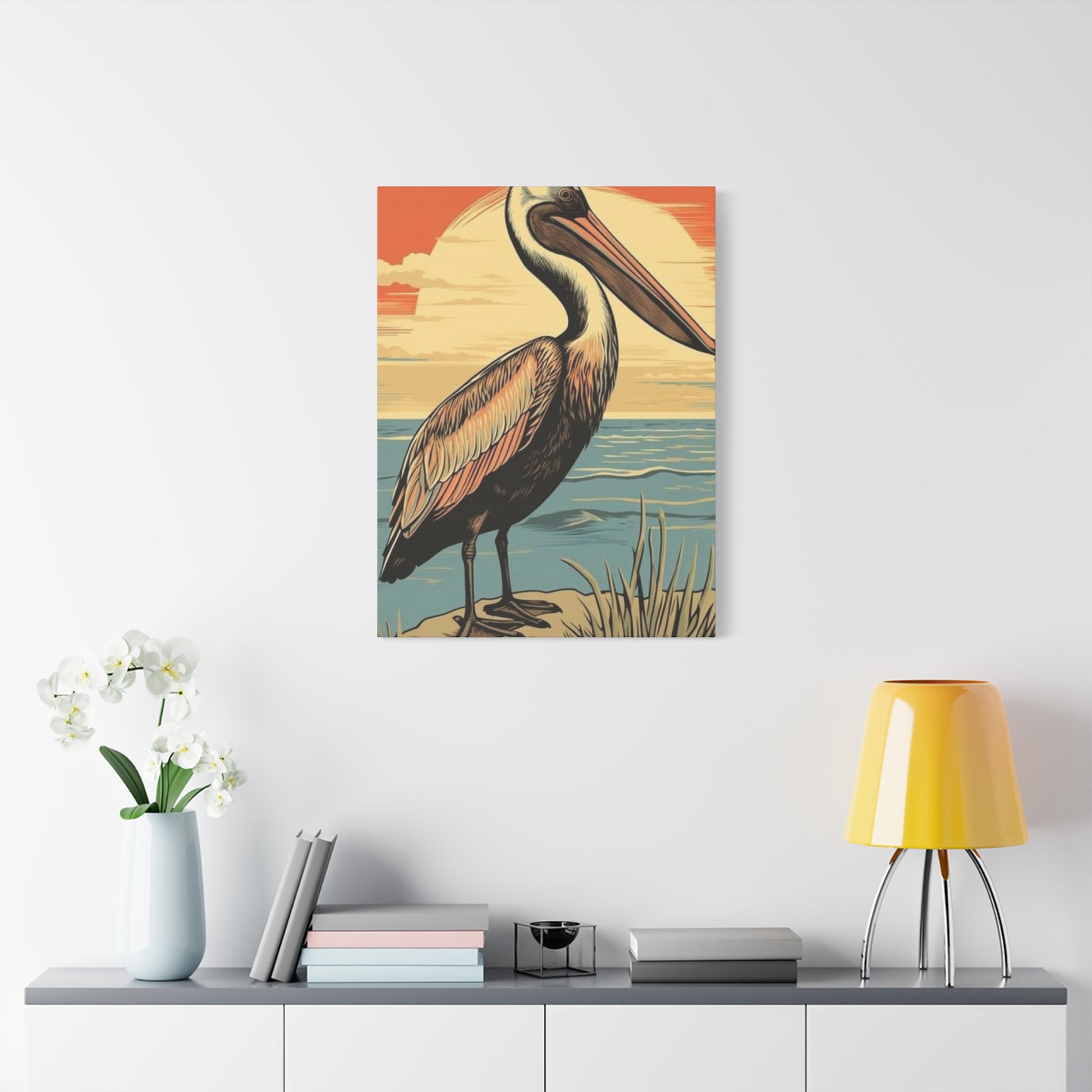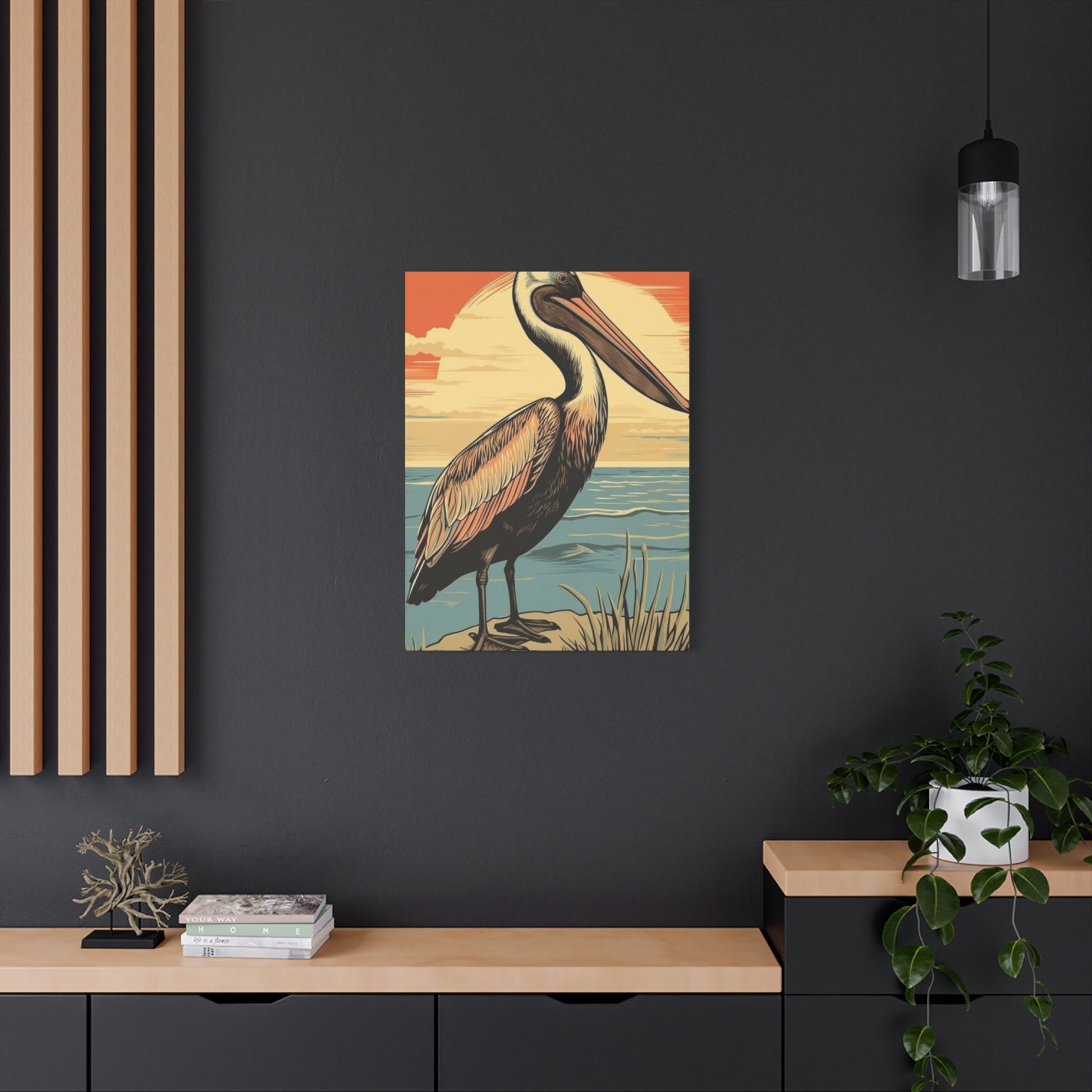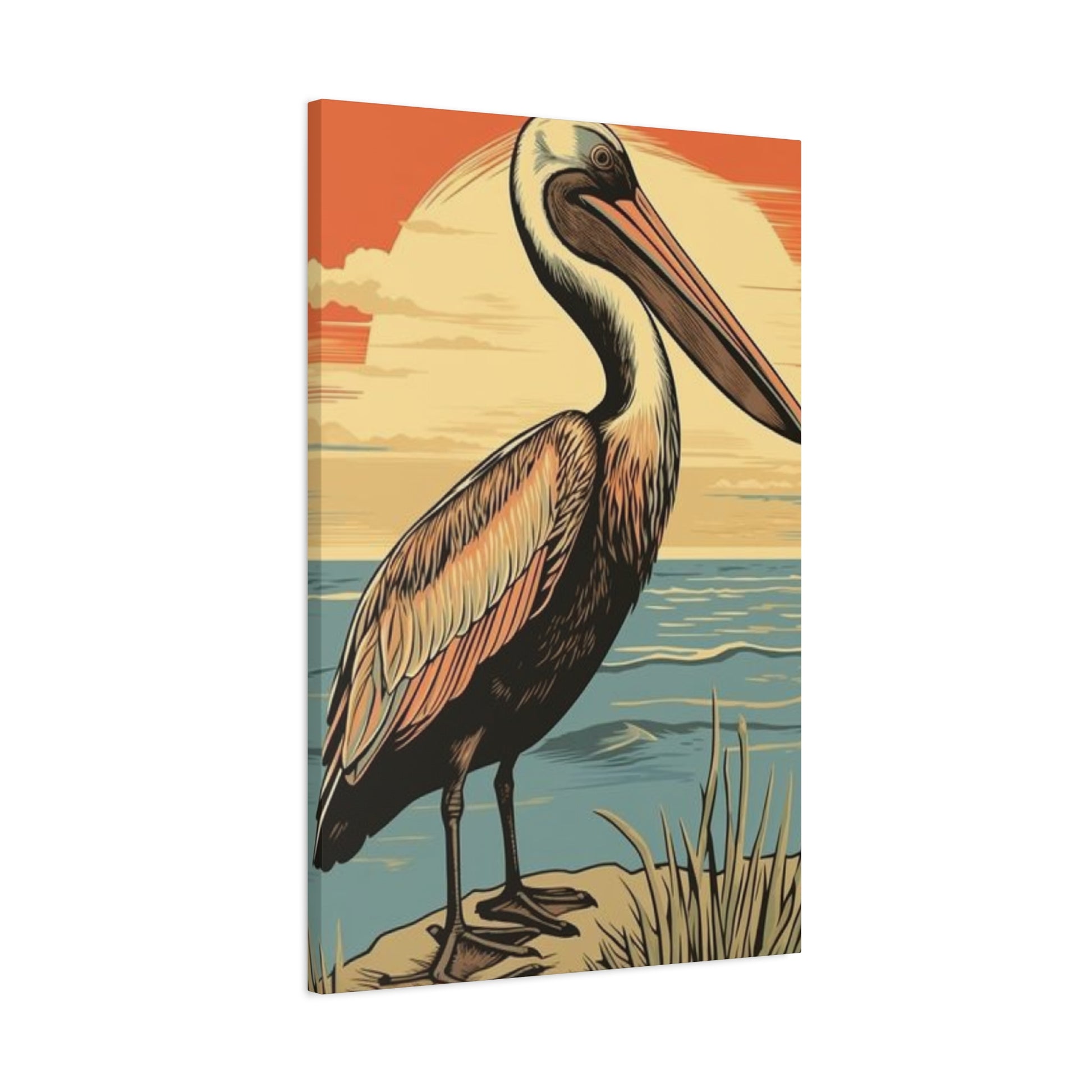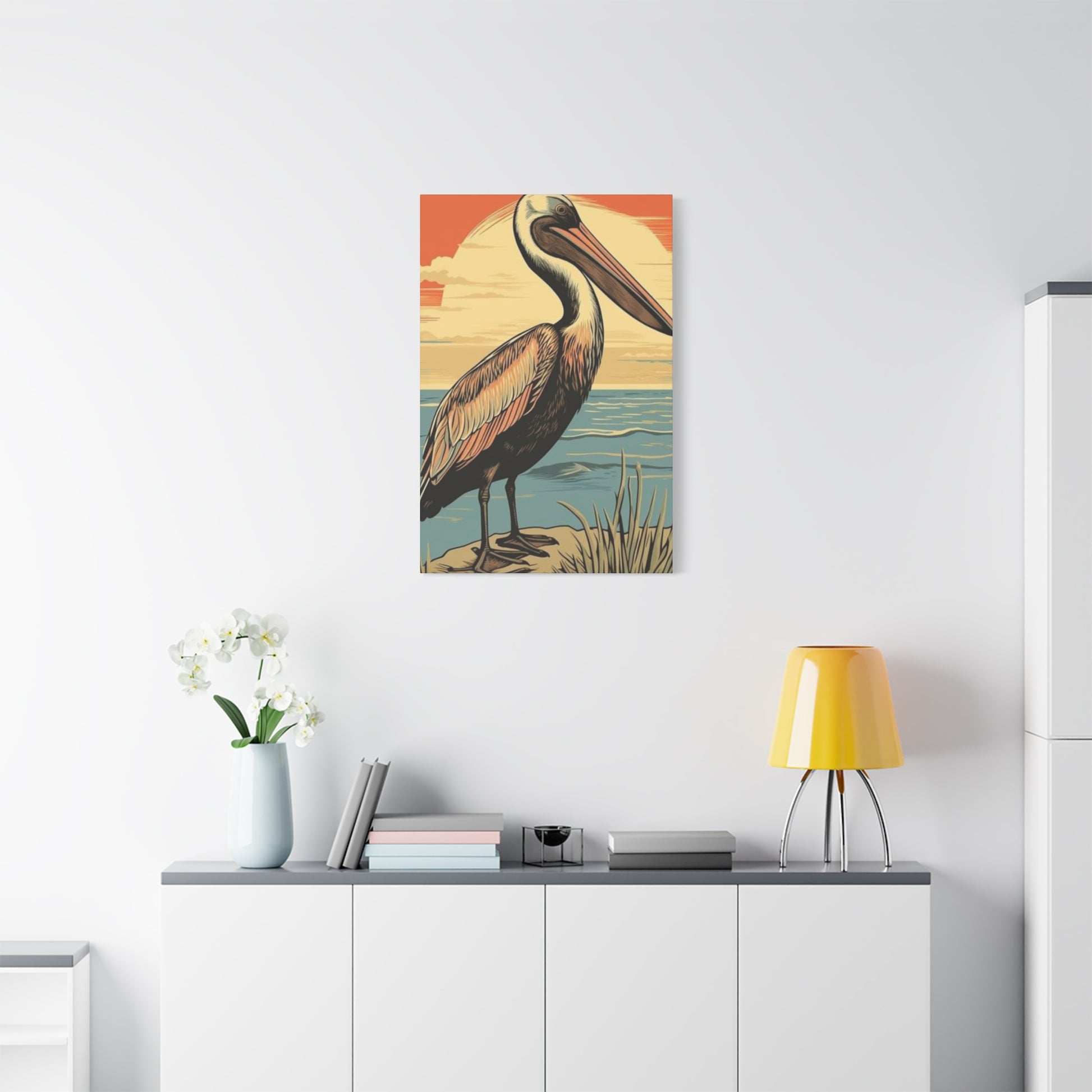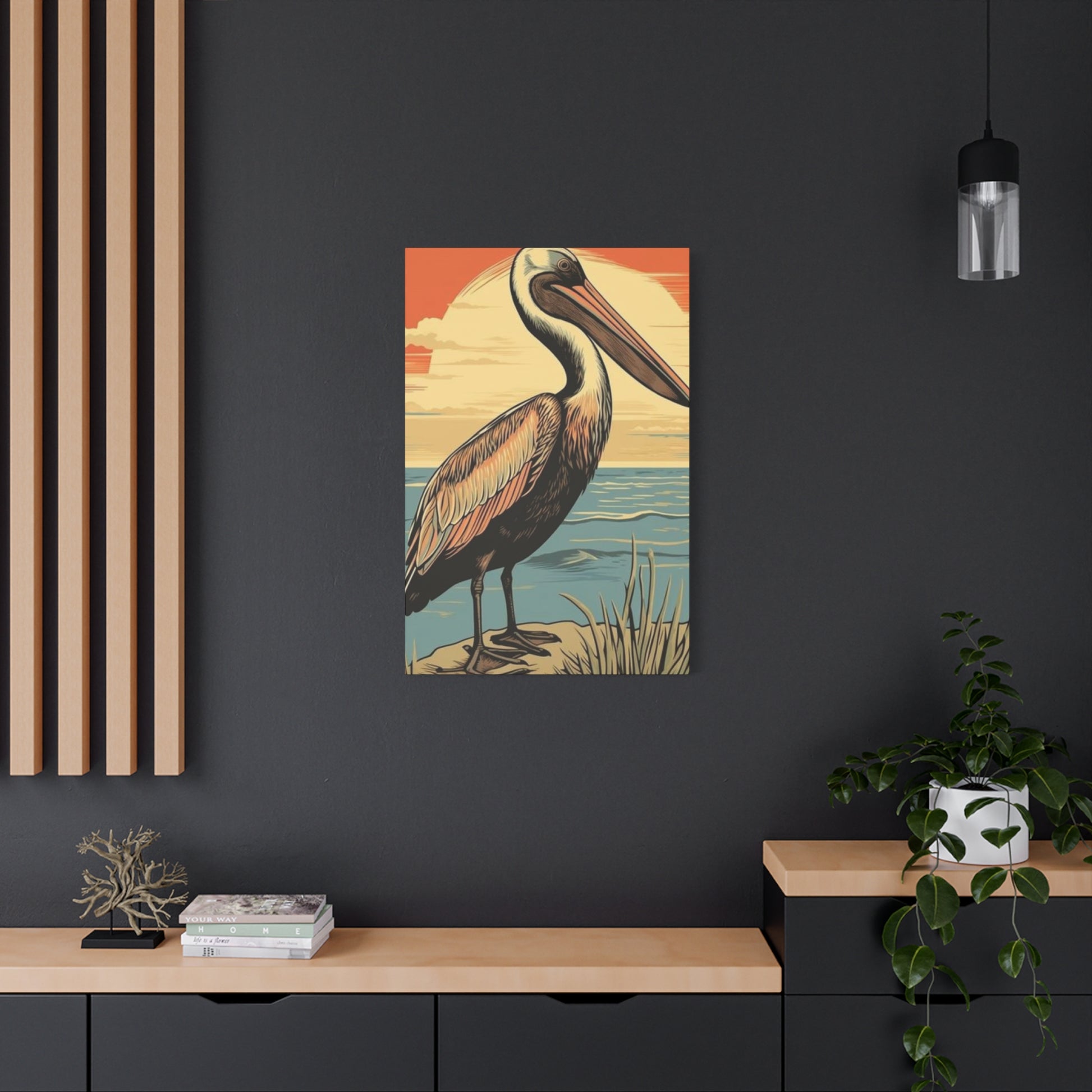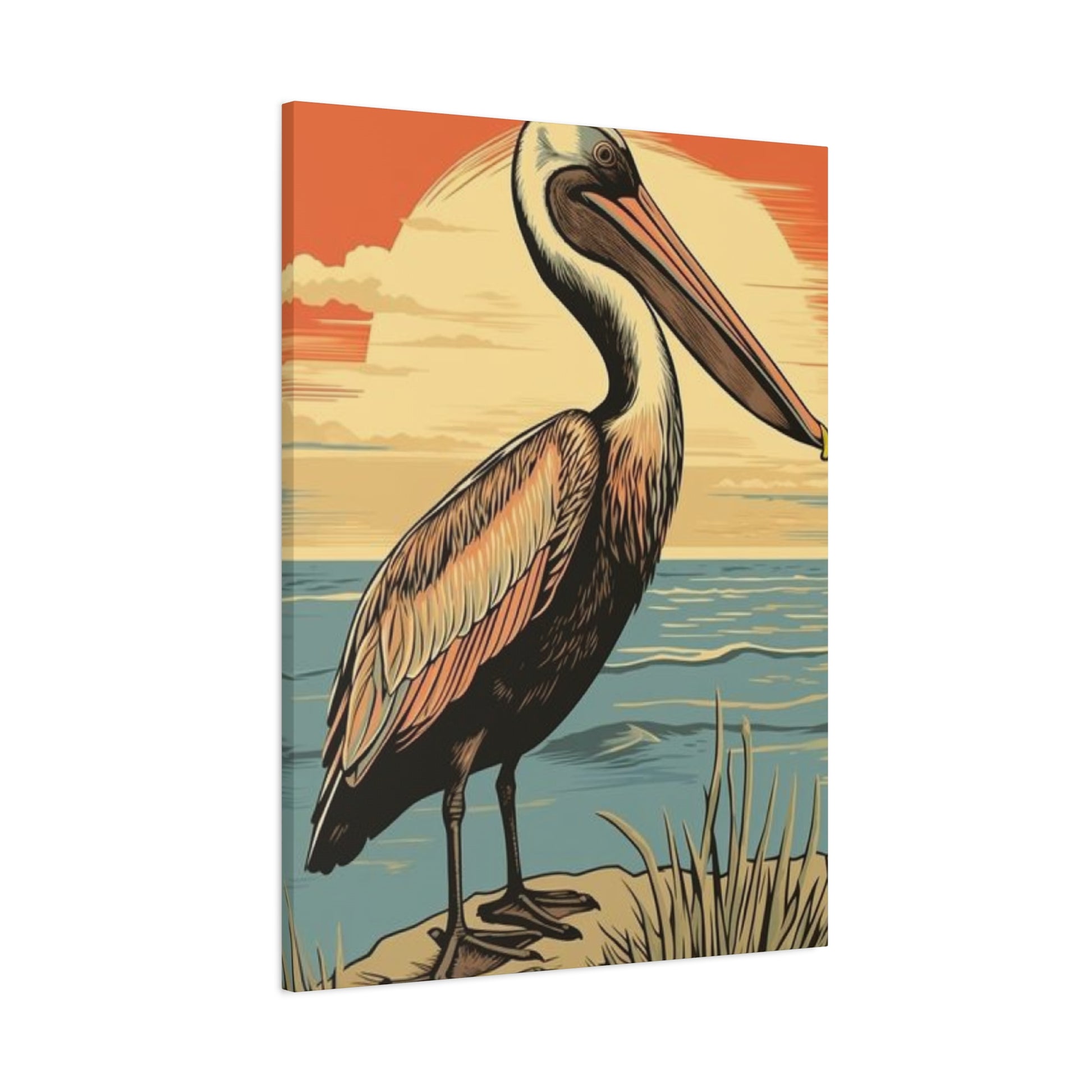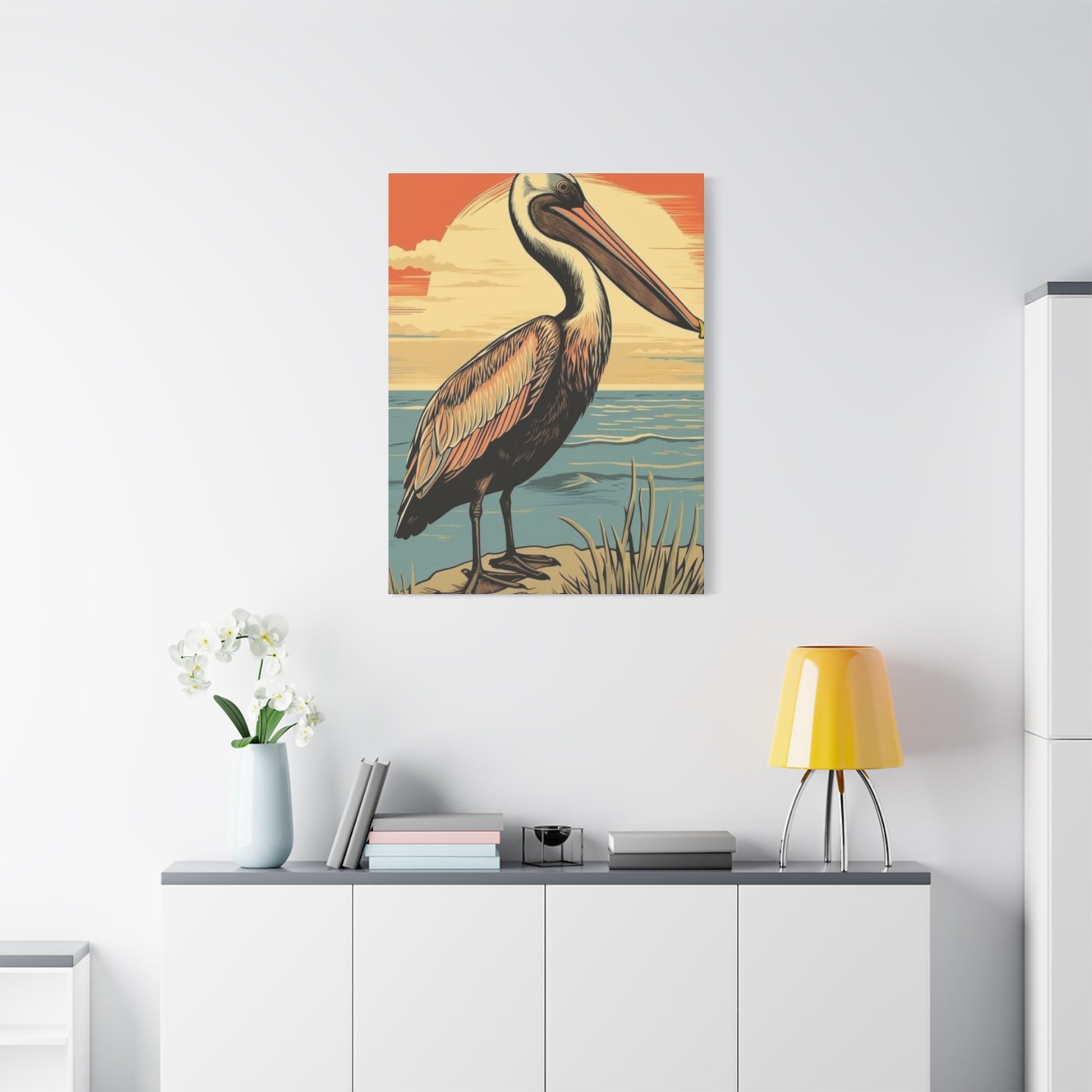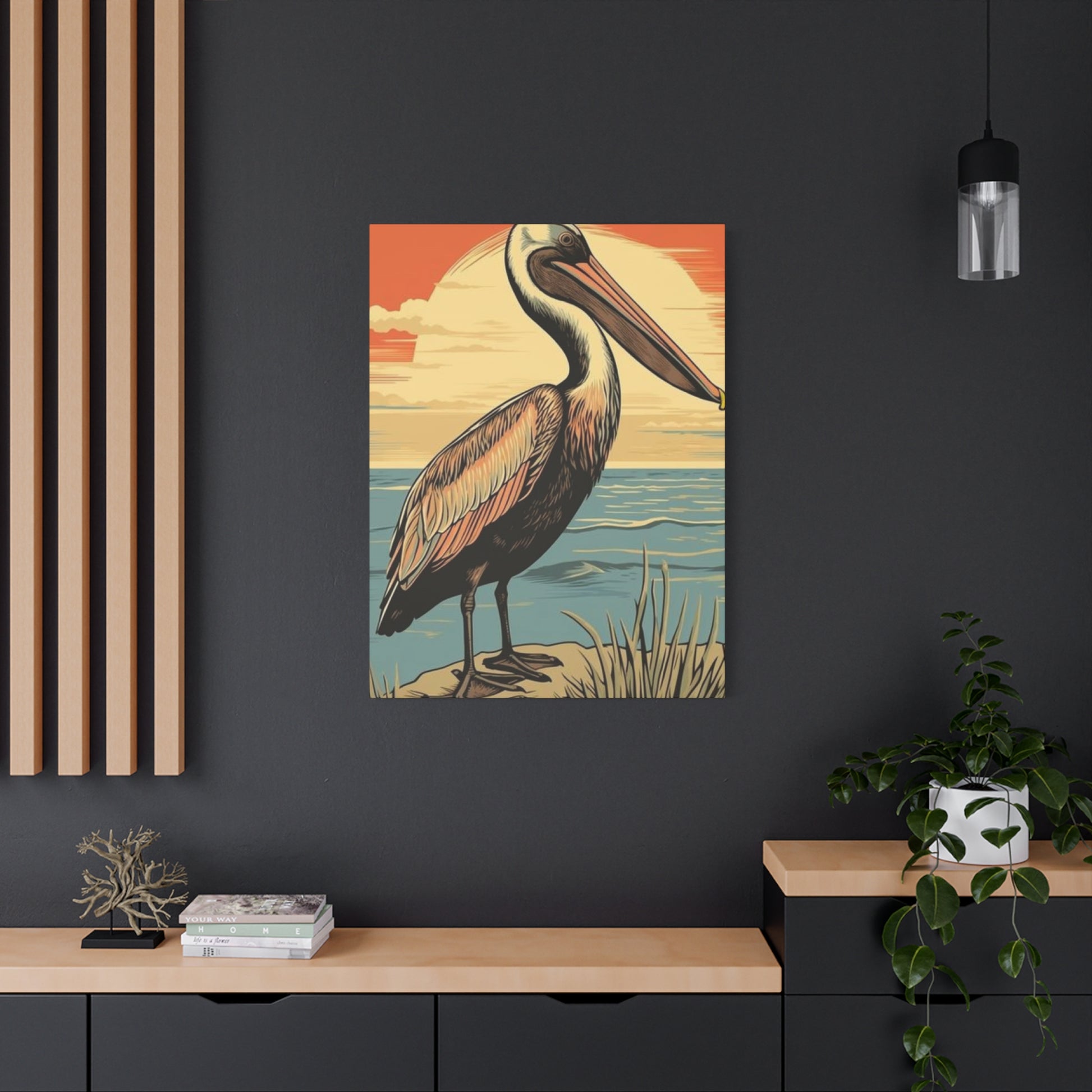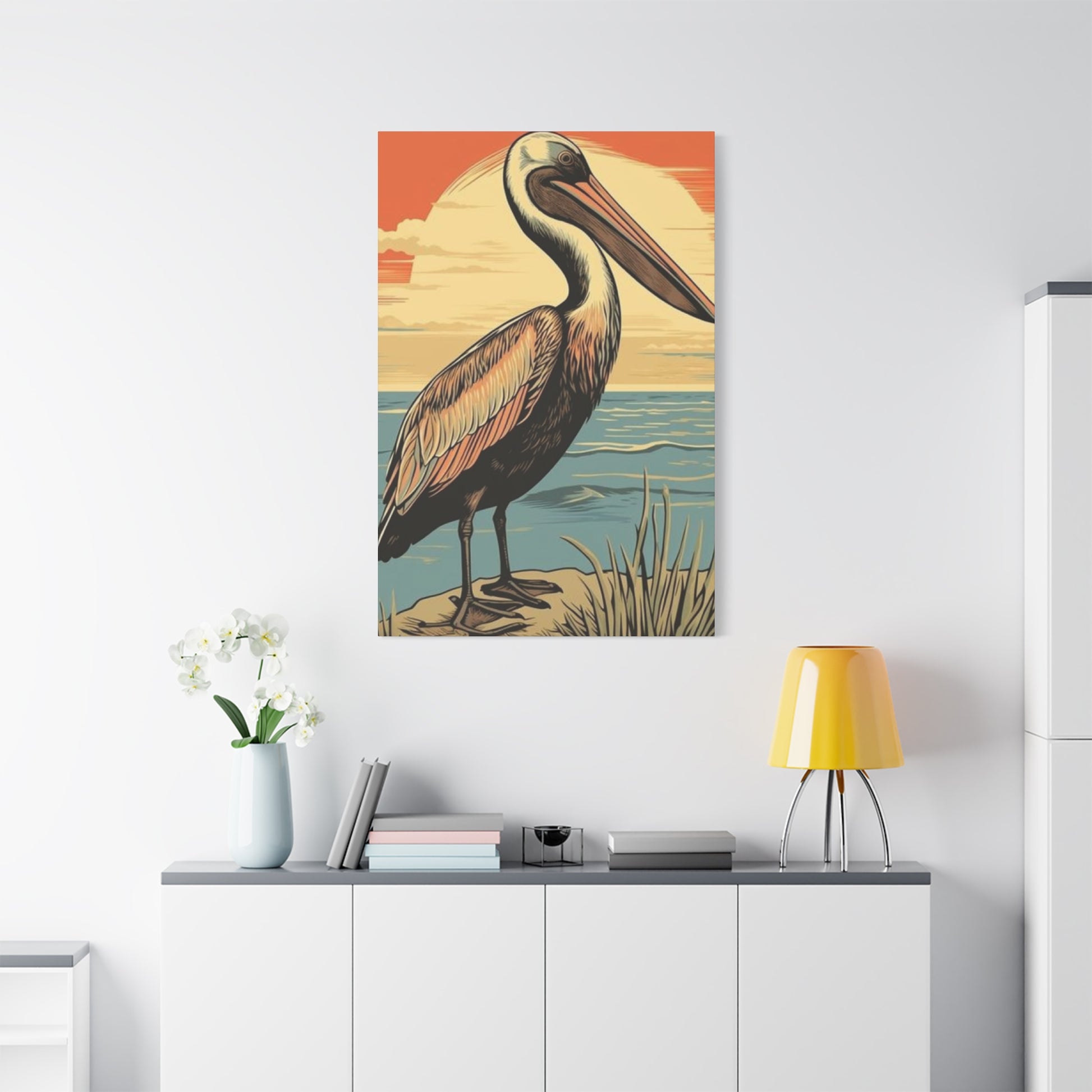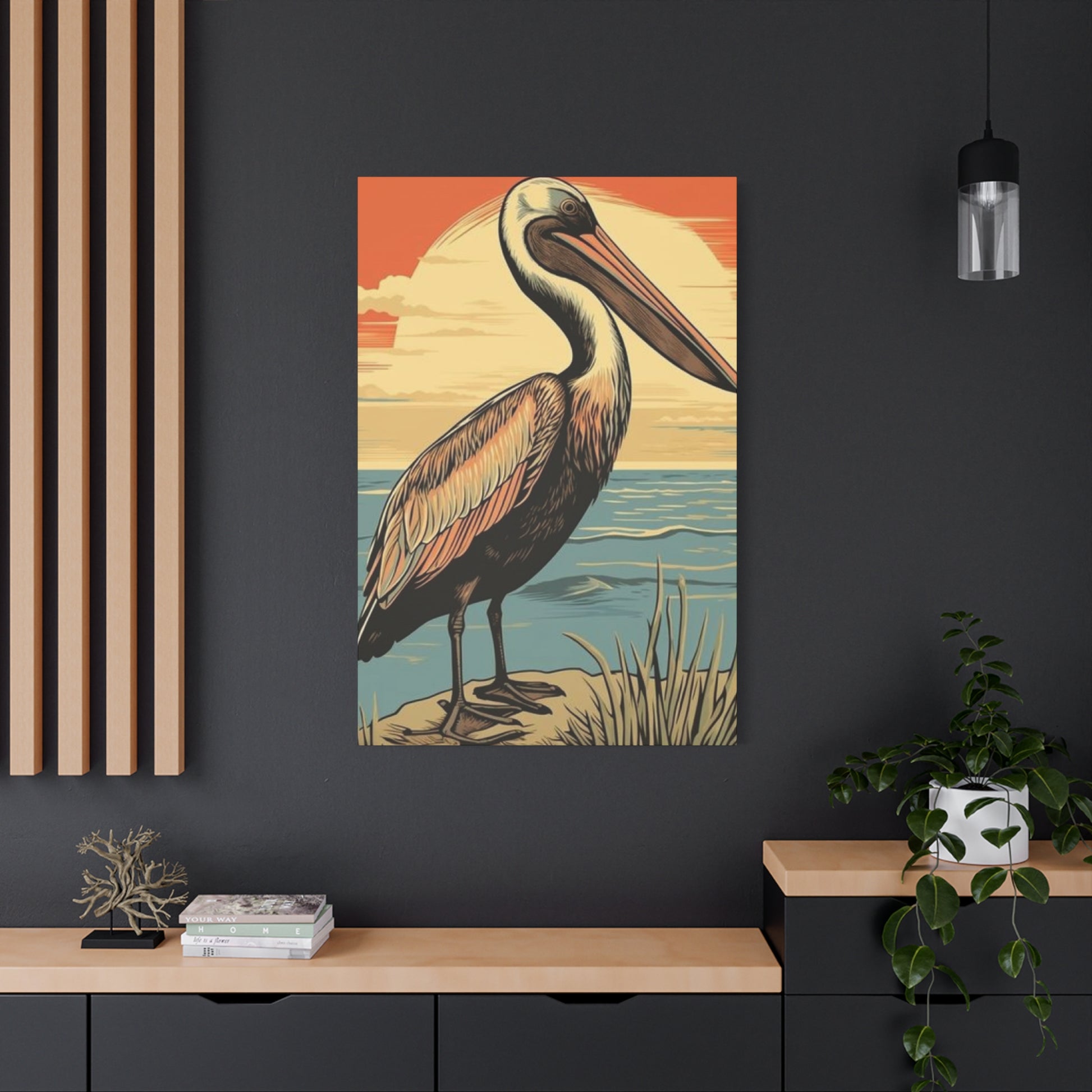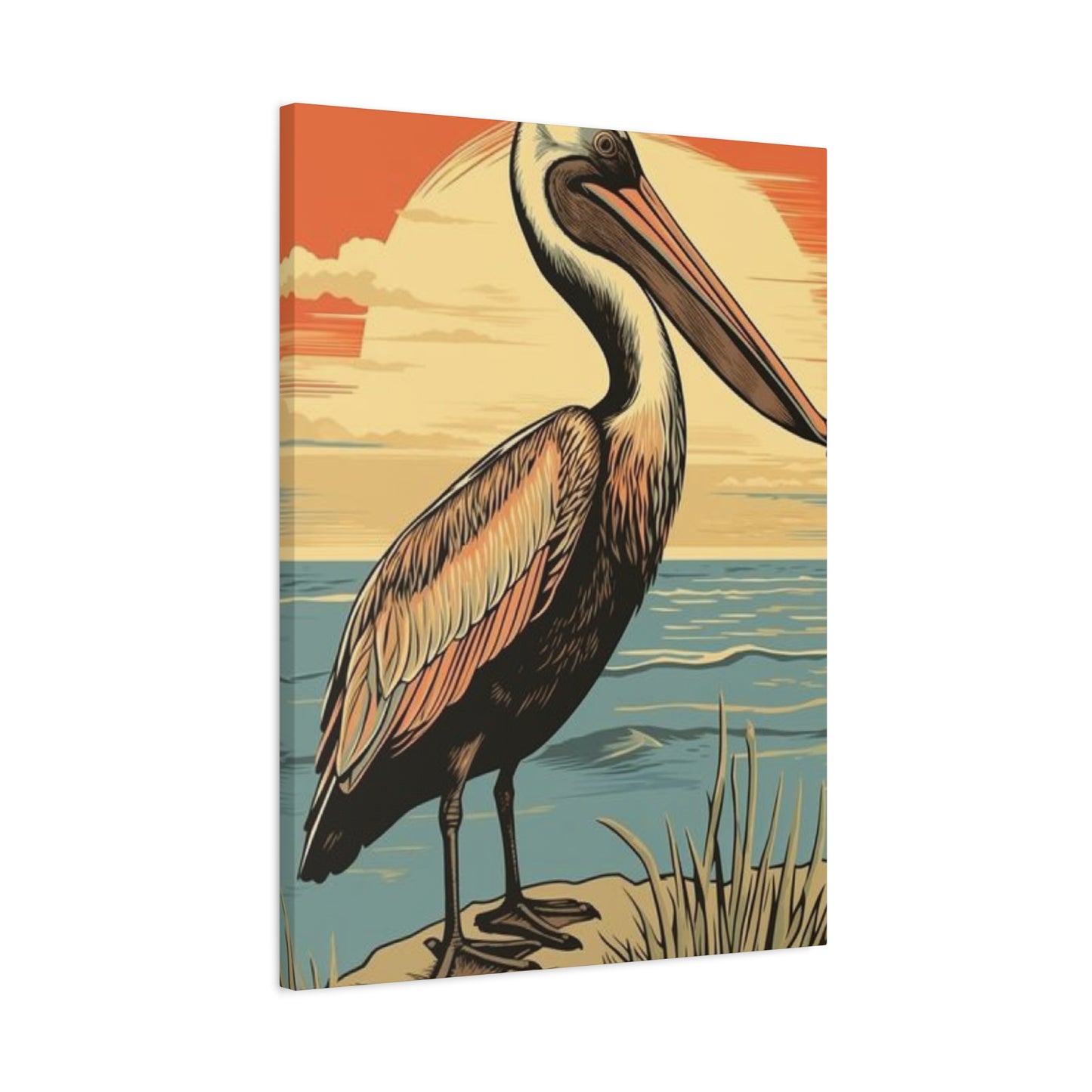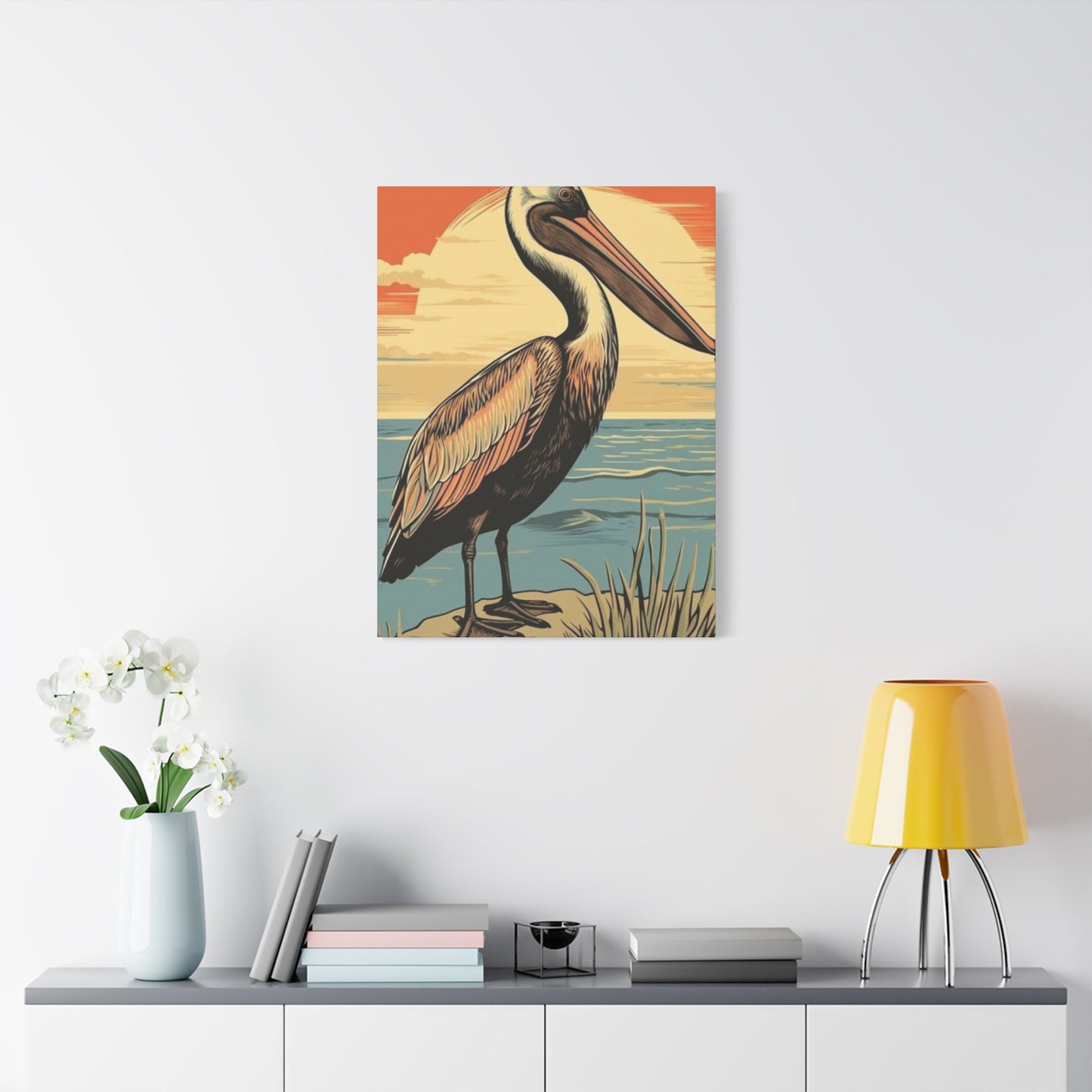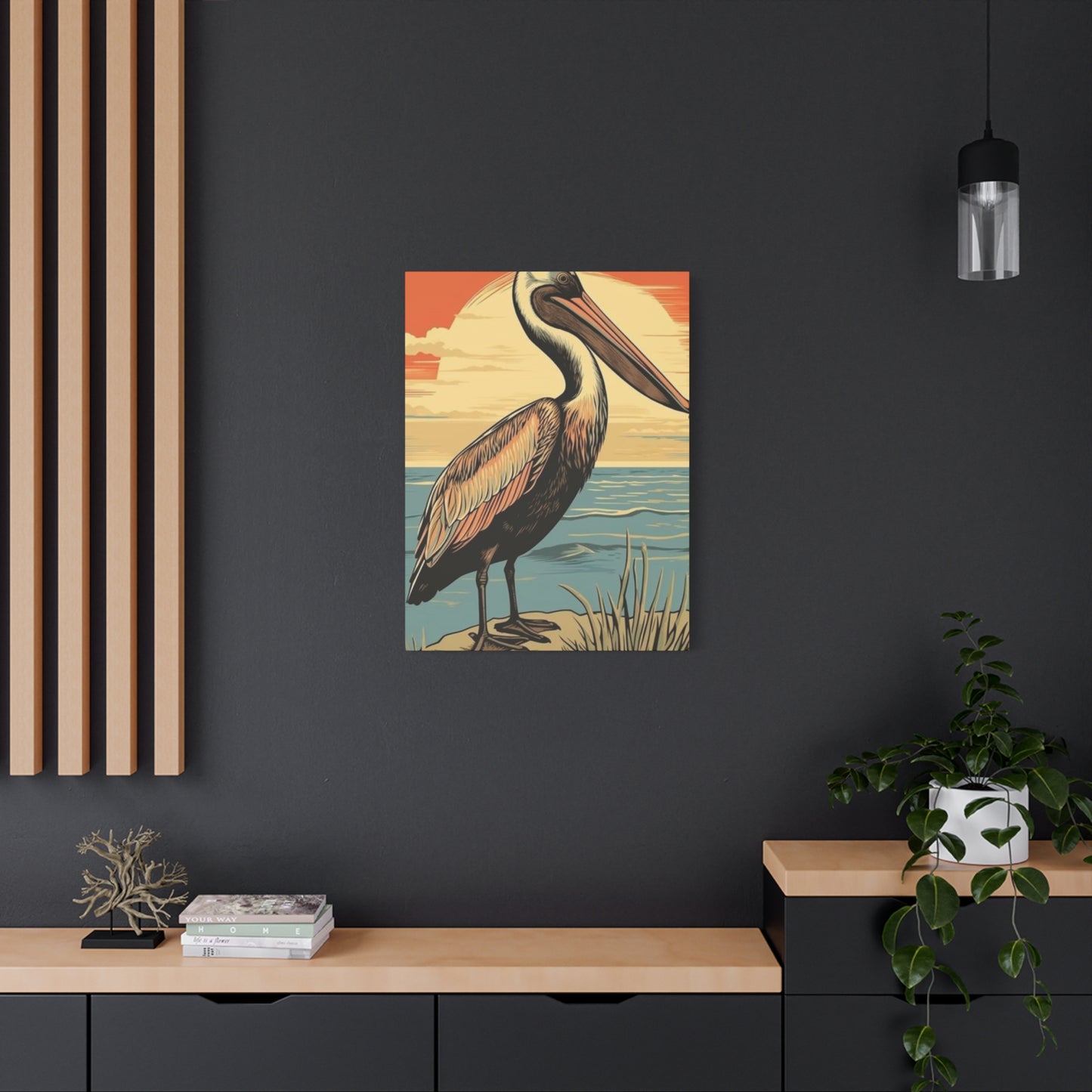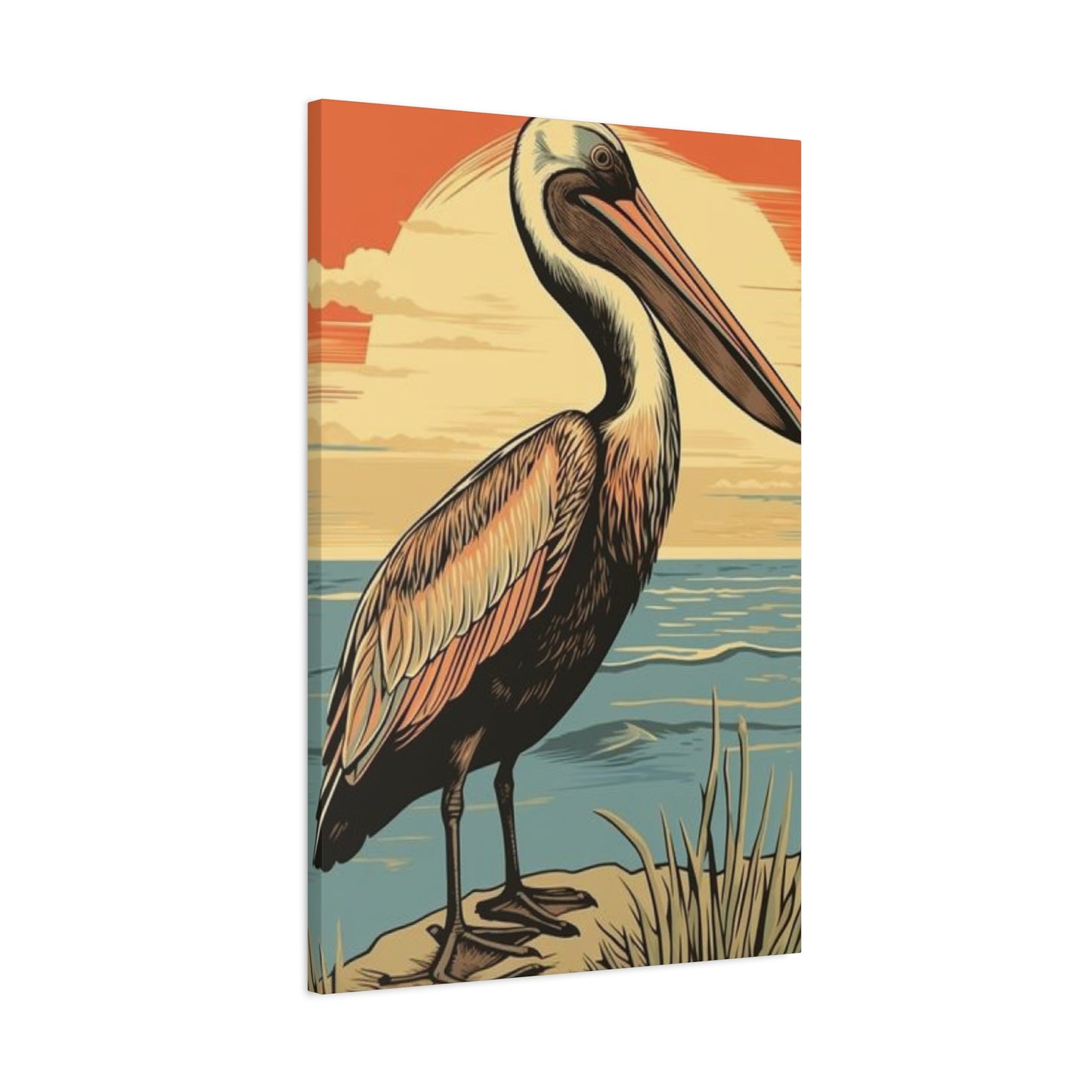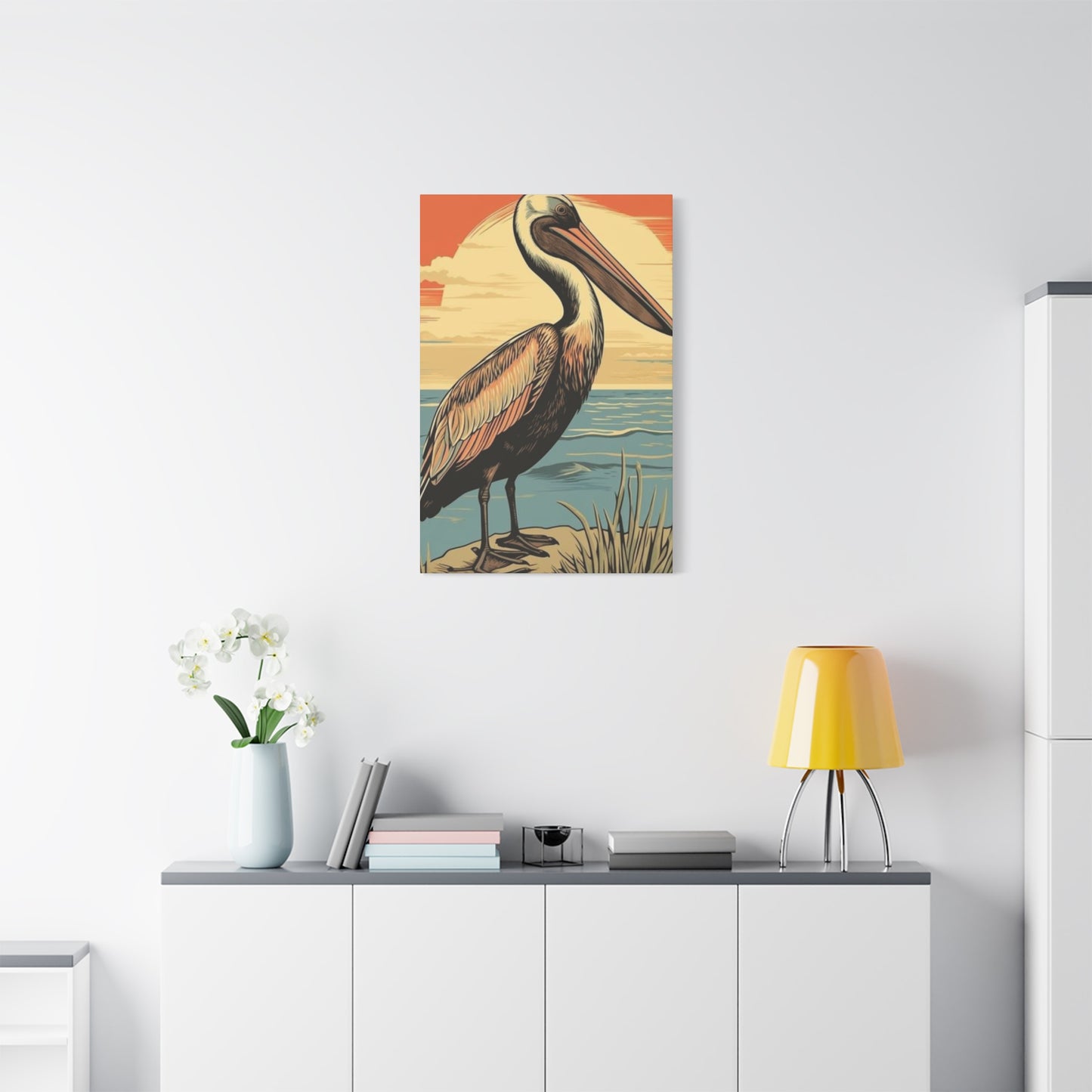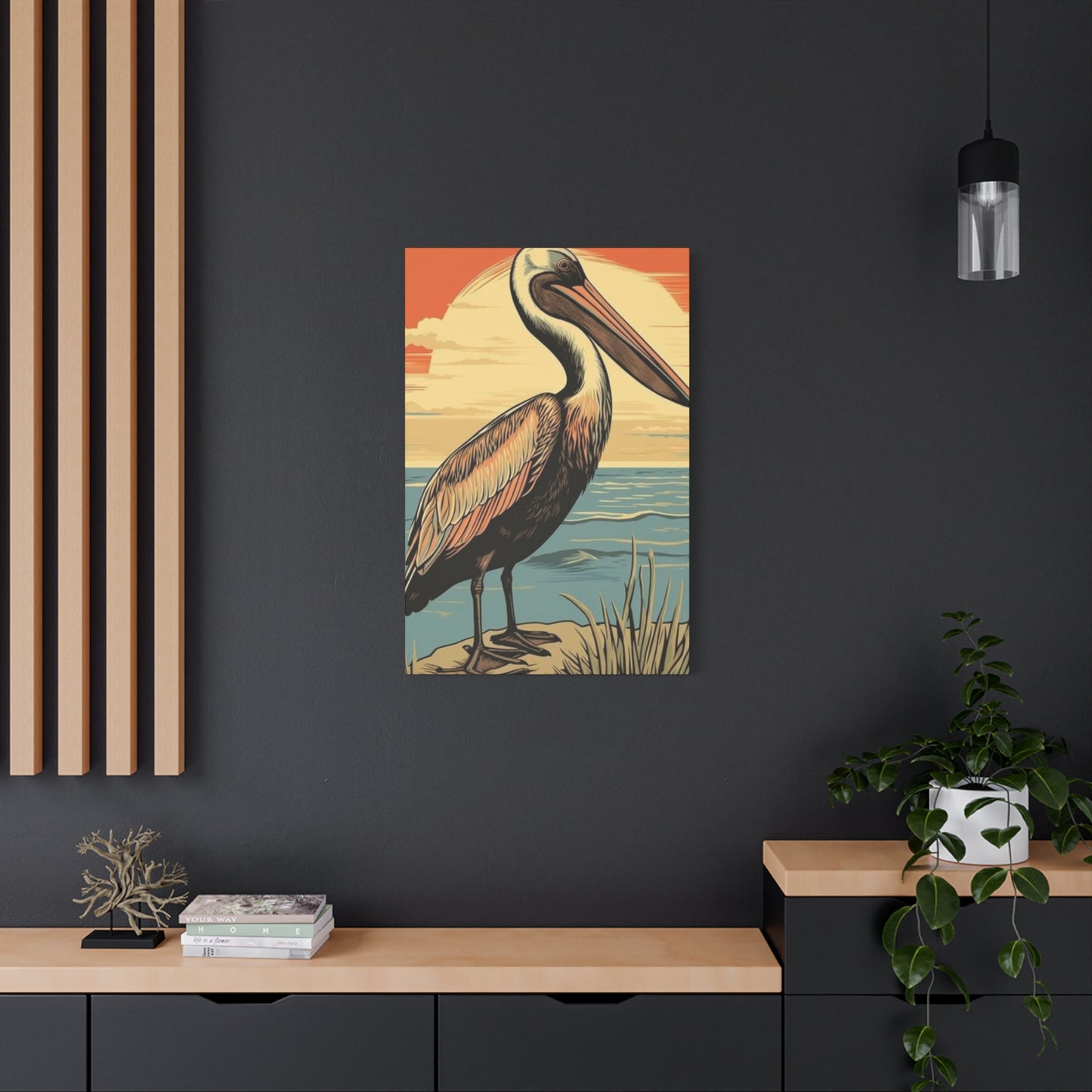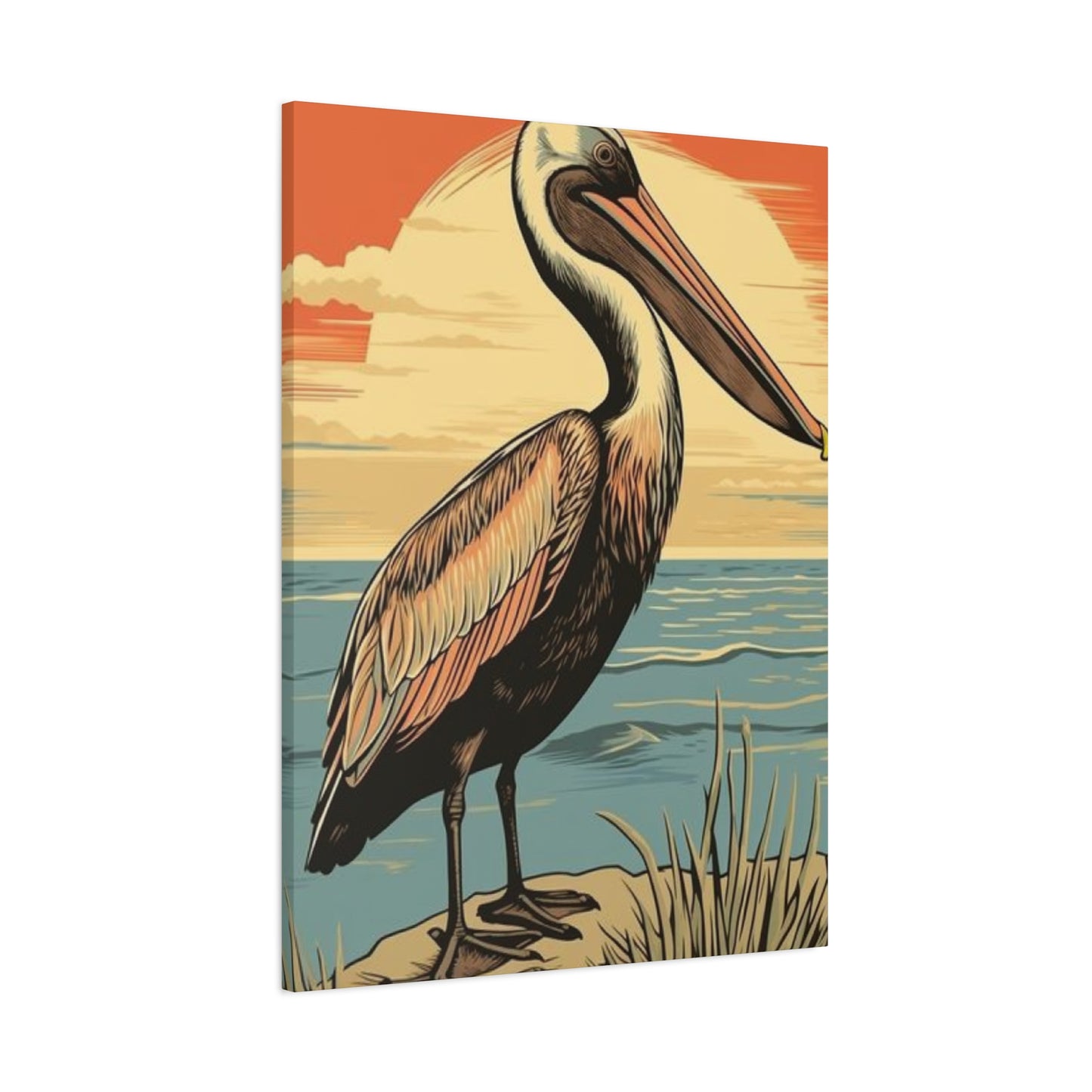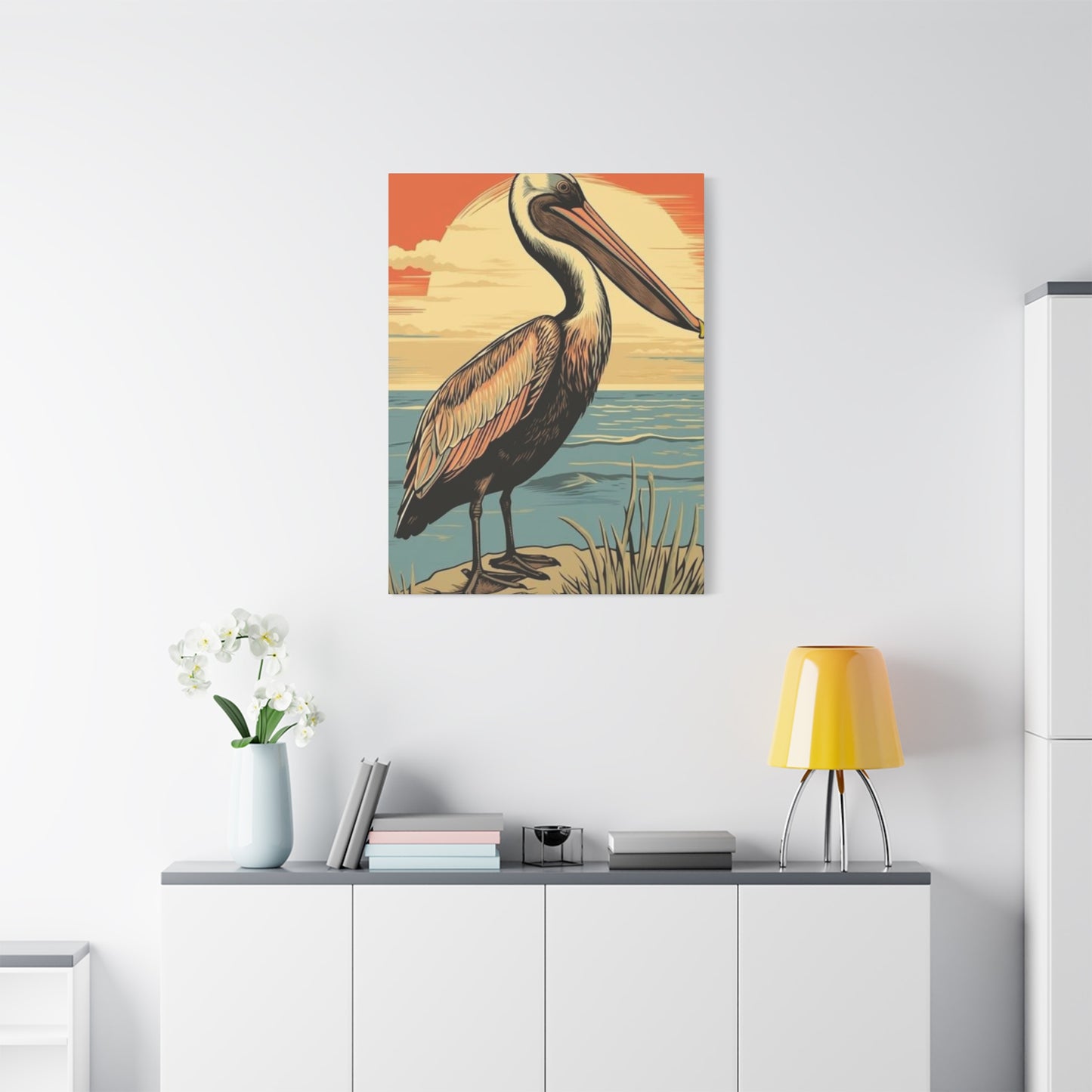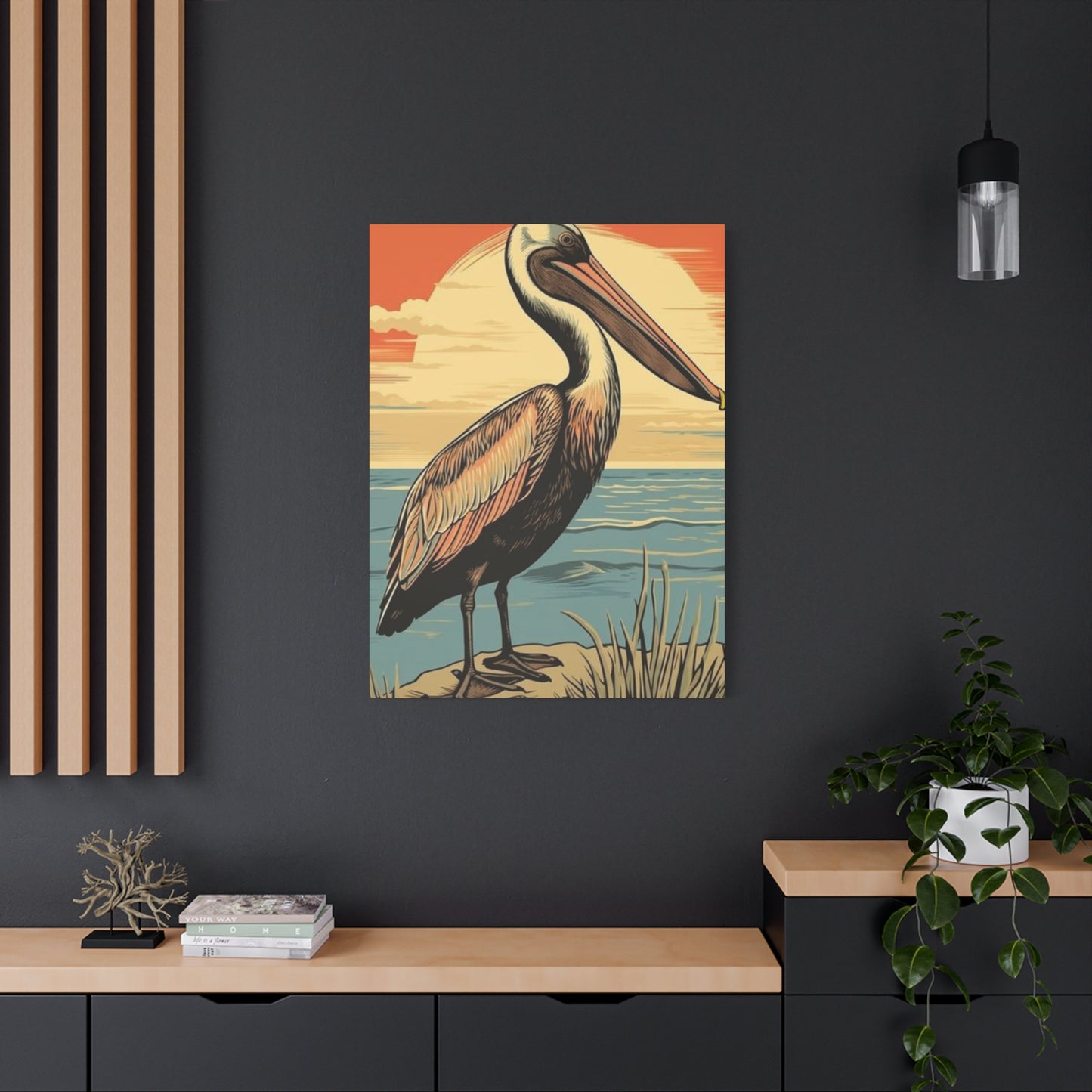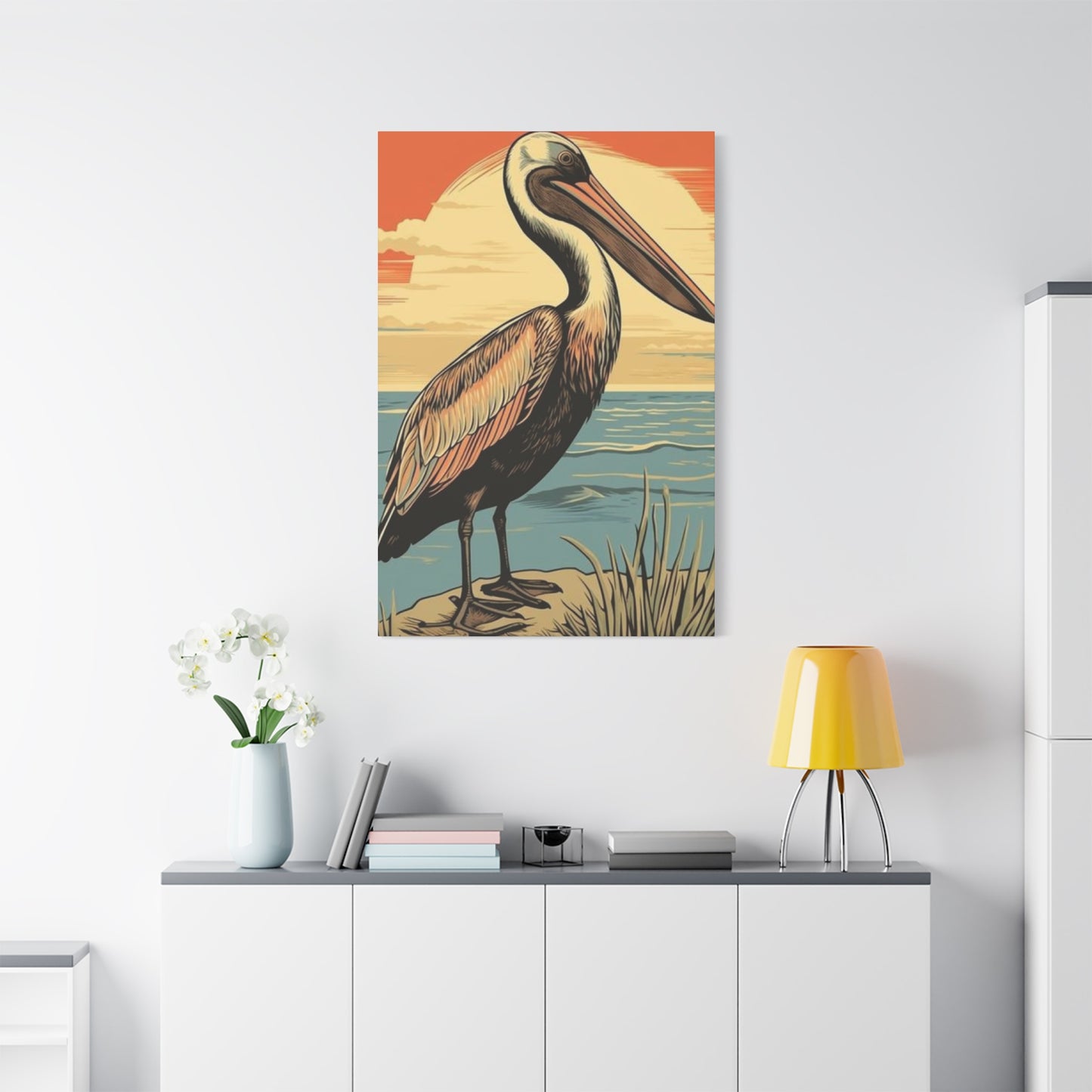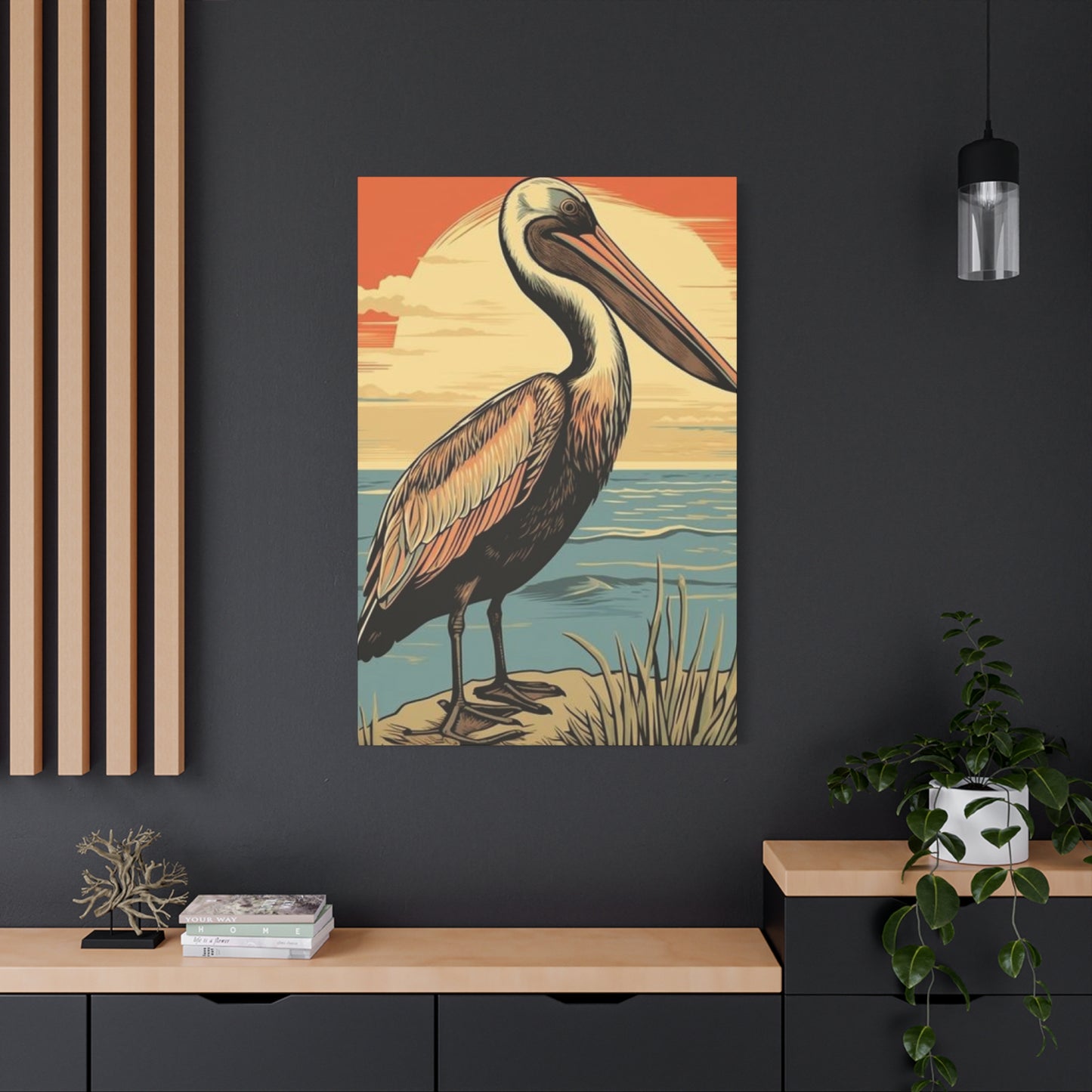Vibrant Pelican Wall Art: Creating Coastal Charm with Colorful Bird Canvas Prints
Pelican wall art has emerged as one of the most captivating forms of coastal-themed decoration, bringing the majestic beauty of these remarkable seabirds into homes and offices across the globe. These magnificent creatures, with their distinctive pouched beaks and graceful flight patterns, have inspired artists for centuries to create stunning visual representations that capture their essence and natural charm.
The appeal of pelican artwork extends far beyond simple decoration. These pieces serve as windows into the coastal lifestyle, evoking memories of seaside vacations, peaceful morning walks along sandy beaches, and the gentle sounds of ocean waves. When you incorporate colorful pelican canvas prints into your living environment, you're not just adding visual interest – you're creating an atmosphere that speaks to the soul's desire for tranquility and connection with nature.
Modern pelican wall art has evolved dramatically from traditional seascape paintings to include vibrant, contemporary interpretations that blend photographic realism with artistic expression. These pieces range from hyperrealistic portrayals that showcase every feather detail to abstract representations that capture the bird's spirit through bold colors and dynamic brushstrokes. The versatility of pelican art means there's a perfect piece for every taste and decorating style, whether you prefer minimalist elegance or bold, statement-making designs.
The psychological impact of bird-themed artwork, particularly pelican prints, has been widely studied by environmental psychologists. Research indicates that viewing images of birds, especially coastal species like pelicans, can reduce stress levels and promote feelings of freedom and peace. This makes pelican wall art not just aesthetically pleasing but also beneficial for mental well-being, creating sanctuaries of calm within busy modern lifestyles.
Artistic Techniques in Modern Pelican Canvas Creation
Contemporary artists employ various techniques to bring pelican subjects to life on canvas, each method offering unique advantages in capturing different aspects of these remarkable birds. Digital art has revolutionized how artists approach pelican imagery, allowing for unprecedented control over color saturation, lighting effects, and compositional elements that would be challenging to achieve through traditional media alone.
Acrylic painting remains one of the most popular mediums for creating pelican artwork due to its versatility and vibrant color capabilities. Artists can layer acrylics to create depth and texture, mimicking the varied textures found in pelican feathers – from the smooth, sleek appearance of wet plumage to the fluffy, downy texture of dry feathers. The quick-drying nature of acrylics allows artists to work in layers, building up complex color relationships that give life to their pelican subjects.
Watercolor techniques have gained renewed popularity among pelican artists, particularly for creating pieces that emphasize the bird's connection to aquatic environments. The fluid nature of watercolors perfectly captures the essence of water movement and reflection, creating backgrounds that complement pelican subjects beautifully. Many contemporary artists combine watercolor backgrounds with more detailed acrylic or oil pelican figures, creating mixed-media pieces that offer the best of both worlds.
Oil painting, while requiring longer drying times, provides unparalleled richness in color and texture for pelican artwork. Master artists often choose oils for their ability to blend seamlessly, creating subtle gradations in feather coloring and atmospheric effects that give pelican paintings a lifelike quality. The extended working time of oils allows artists to refine details continuously, resulting in highly realistic pelican portraits that seem to breathe with life.
Digital photography combined with artistic enhancement has opened new possibilities for pelican wall art creation. Photographers capture stunning pelican images in their natural habitats, which are then enhanced through digital manipulation to create artwork that bridges the gap between photography and painting. These pieces often feature intensified colors, dramatic lighting effects, and compositional adjustments that create more impactful wall art than straight photography alone could achieve.
Color Psychology in Pelican Artwork Selection
The color palette chosen for pelican wall art significantly impacts the emotional response it evokes and its effectiveness in different decorating schemes. Understanding color psychology helps in selecting pelican pieces that not only complement existing decor but also contribute to the desired atmosphere of any given room or area.
Blue tones, naturally associated with pelicans due to their coastal habitat, create feelings of calm, trust, and serenity. Pelican artwork featuring various shades of blue – from deep navy representing ocean depths to soft sky blues suggesting infinite horizons – works particularly well in bedrooms, bathrooms, and meditation areas where tranquility is desired. These pieces help create psychological connections to peaceful coastal environments, even in urban settings far from any ocean.
Orange and yellow hues in pelican art bring warmth and energy to living environments. These colors, often found in sunset pelican scenes or as accent colors in feather details, stimulate feelings of happiness and optimism. Such pieces work excellently in kitchens, dining areas, and family rooms where social interaction and positive energy are encouraged. The warmth of these colors can make large rooms feel more intimate and welcoming.
Green tones in pelican artwork, whether representing coastal vegetation or reflected water colors, promote feelings of growth, harmony, and natural balance. These pieces are particularly effective in home offices, study areas, and any environment where concentration and mental clarity are important. The natural associations of green with plant life and renewal make green-toned pelican art excellent choices for spaces dedicated to creativity and productivity.
Purple and magenta accents in pelican wall art add sophistication and creativity to decorating schemes. These colors, often found in dramatic sky backgrounds or artistic interpretations of pelican features, appeal to viewers seeking something unique and expressive. Such pieces work well in artistic studios, creative workrooms, or anywhere a touch of the unexpected is desired.
Neutral color palettes in pelican artwork offer maximum versatility and timeless appeal. Black and white pelican prints, sepia-toned pieces, or artwork featuring subtle earth tones can adapt to changing decorating trends while maintaining their visual impact. These pieces serve as excellent foundational artwork around which other decorative elements can be arranged and rearranged over time.
Choosing the Perfect Size for Your Pelican Wall Art
Selecting the appropriate size for pelican wall art is crucial for achieving maximum visual impact while maintaining proper proportion within your decorating scheme. The relationship between artwork size and room dimensions, furniture placement, and viewing distance all factor into creating harmonious and visually pleasing arrangements.
Large-scale pelican canvas prints, typically measuring 36 inches or larger in their longest dimension, create dramatic focal points that can anchor entire room designs. These substantial pieces work best in rooms with high ceilings and generous wall areas, such as living rooms, foyers, or master bedrooms. When properly positioned, large pelican artwork can make rooms feel more intimate by creating visual weight that balances expansive architectural elements.
The viewing distance for large pelican pieces should allow viewers to appreciate both overall composition and fine details without feeling overwhelmed. Generally, viewers should be able to step back at least six to eight feet from large artwork to see it in its entirety. This makes large pelican prints ideal for rooms where people spend time at various distances from the walls, such as living rooms with multiple seating areas.
Medium-sized pelican wall art, ranging from 18 to 36 inches, offers excellent versatility for most decorating situations. These pieces are substantial enough to hold their own as focal points while remaining appropriately scaled for average room sizes. Medium pelican prints work particularly well above furniture pieces like sofas, credenzas, or dining room sideboards, where they can create visual connections between wall art and room furnishings.
Small pelican artwork, under 18 inches, excels in creating intimate viewing experiences and works beautifully in grouped arrangements. These pieces are perfect for hallways, bathrooms, small offices, or anywhere wall coverage is limited but artistic interest is desired. Small pelican prints can be combined with other coastal-themed artwork to create gallery walls that tell larger visual stories while maintaining individual piece integrity.
The golden ratio principle applies beautifully to pelican wall art sizing, suggesting that artwork width should relate harmoniously to wall width and surrounding elements. Following this mathematical relationship helps create naturally pleasing proportions that feel comfortable to viewers without requiring conscious analysis of why they work so well.
Pelican Species and Their Artistic Representations
Different pelican species offer unique artistic opportunities, each bringing distinct characteristics that influence how they're portrayed in wall art. Understanding these species differences helps in selecting pelican artwork that resonates with personal preferences and decorating goals.
American White Pelicans, with their pristine white plumage and distinctive black wing markings, create stunning contrast opportunities in artwork. Artists often emphasize the dramatic visual impact of these birds against various background colors, from deep blue ocean scenes to warm sunset skies. The clean lines and bold coloring of White Pelican art make these pieces particularly effective in contemporary decorating schemes where simplicity and impact are valued.
Brown Pelicans, being the most commonly depicted species in coastal art, offer rich opportunities for exploring earth tone palettes and textural details. Their varied brown plumage, ranging from deep chocolate to warm caramel tones, provides artists with natural color harmonies that work beautifully with wood furnishings and earth-toned decorating schemes. Brown Pelican artwork often captures these birds in action – diving for fish, skimming wave surfaces, or perched on weathered dock posts.
The California Brown Pelican, a subspecies with particularly rich coloring during breeding season, has inspired artwork featuring brilliant orange and yellow beak colors combined with the distinctive gular pouch. These pieces often emphasize the bird's more colorful aspects, creating vibrant wall art that brings energy and warmth to any environment. The seasonal color changes of these pelicans provide artists with opportunities to create pieces that celebrate the natural cycles of coastal life.
Dalmatian Pelicans, the largest of all pelican species, offer artists opportunities to create artwork emphasizing majesty and grandeur. Their massive size and distinctive curly crest feathers create dramatic silhouettes that translate beautifully into large-scale wall art. These pieces often focus on the bird's impressive presence rather than action scenes, creating contemplative artwork perfect for meditation or quiet reflection areas.
Great White Pelicans, found across Africa, Asia, and southeastern Europe, provide artists with subjects that combine the clean white plumage of American White Pelicans with the massive size of Dalmatian Pelicans. Artwork featuring these birds often emphasizes their graceful flight formations and social behaviors, creating pieces that celebrate community and cooperation themes alongside natural beauty.
Coastal Home Decorating with Pelican Wall Art
Integrating pelican wall art into coastal-themed home decorating requires understanding how these pieces interact with other coastal elements to create cohesive, harmonious environments. The key lies in balancing the natural beauty of pelican imagery with complementary coastal accessories and color schemes.
Natural materials form the foundation of successful coastal decorating schemes that incorporate pelican artwork. Weathered wood elements, whether in furniture, frames, or architectural details, provide perfect complements to pelican wall art by echoing the natural coastal environments where these birds thrive. Driftwood frames around pelican prints create seamless connections between artwork and coastal themes, while reclaimed wood furniture pieces ground colorful pelican art with authentic coastal texture.
Textile choices play crucial roles in supporting pelican wall art within coastal decorating schemes. Natural fibers like linen, cotton, and jute provide appropriate textural contrast to smooth canvas surfaces while maintaining coastal authenticity. Color coordination between pelican artwork and room textiles creates visual harmony – for example, accent pillows that pick up specific colors from pelican prints can tie entire room designs together effectively.
Lighting considerations become particularly important when displaying pelican wall art in coastal-themed environments. Natural light enhances the colors and details in pelican prints, but direct sunlight should be avoided to prevent fading. Strategically placed accent lighting can highlight pelican artwork during evening hours while creating dramatic shadows that add depth to coastal decorating schemes. Consider using warm-toned LED lighting that mimics the golden quality of seaside sunlight.
Accessory coordination helps integrate pelican wall art into broader coastal themes without creating cluttered or theme-heavy environments. Subtle nods to coastal life – perhaps a piece of coral, a collection of sea glass, or weathered rope details – can support pelican artwork without competing for attention. The goal is creating environments that feel naturally evolved rather than deliberately themed.
Plant selections can enhance the effectiveness of pelican wall art in coastal decorating schemes. Tropical plants like palms or bird of paradise create living connections to the natural habitats where pelicans thrive, while succulents and air plants provide low-maintenance options that complement coastal color palettes. The organic shapes and textures of plants provide beautiful counterpoints to the defined forms of pelican artwork.
The Psychology of Bird Art in Living Environments
The presence of bird imagery, particularly pelican wall art, in living environments creates measurable psychological effects that contribute to overall well-being and life satisfaction. Research in environmental psychology has identified specific mechanisms through which bird art influences mood, creativity, and stress levels.
Biophilic design principles recognize humans' innate affinity for natural elements, including bird imagery. Pelican wall art satisfies this biological need for nature connection, particularly important in urban environments where direct nature contact is limited. Studies show that even visual representations of birds can trigger the same stress-reduction responses as actual bird watching, making pelican artwork valuable tools for creating therapeutic home environments.
The symbolic associations of pelicans across cultures contribute additional psychological benefits to their artistic representations. In many traditions, pelicans symbolize self-sacrifice, nurturing, and protection – qualities that create positive emotional associations when encountered in art form. These cultural meanings add depth to the viewing experience, creating artwork that resonates on multiple psychological levels simultaneously.
Color therapy principles apply strongly to pelican wall art selection and placement. The natural color associations of pelican imagery – blues suggesting peace, earth tones promoting stability, and white conveying purity – create therapeutic color environments that support mental health and emotional balance. Choosing pelican artwork based on desired psychological effects can enhance the therapeutic value of living environments.
Cognitive restoration theory suggests that viewing natural imagery, including pelican art, helps restore mental focus and attention capacity depleted by modern life demands. The soft fascination provided by contemplating pelican artwork allows directed attention mechanisms to rest and recover, improving subsequent cognitive performance and reducing mental fatigue.
Memory and association play important roles in how pelican wall art affects psychological well-being. For individuals with positive coastal experiences, pelican imagery can trigger beneficial memory recall that reduces stress and promotes happiness. Even for those without direct coastal experience, pelican art can create aspirational connections that motivate and inspire positive life changes.
Canvas Quality and Longevity in Pelican Artwork
The technical aspects of canvas selection and preparation significantly impact both the appearance and longevity of pelican wall art. Understanding these factors helps in making informed purchasing decisions that ensure artwork maintains its beauty and value over time.
Canvas material choices affect both initial appearance and long-term durability of pelican artwork. Cotton duck canvas provides excellent texture and paint adhesion while remaining relatively affordable for most budgets. Its natural fiber construction allows slight stretch and contraction with humidity changes, preventing cracking in properly prepared pieces. However, cotton canvas requires proper sizing and priming to prevent paint absorption issues that can dull colors over time.
Linen canvas represents the premium choice for high-quality pelican artwork, offering superior durability and archival properties. The tight weave and natural oils in linen fibers provide excellent paint adhesion while resisting degradation from environmental factors. Linen canvas maintains its structural integrity longer than cotton alternatives, making it ideal for investment-quality pelican pieces intended for long-term display.
Synthetic canvas materials, including polyester blends, offer advantages in stability and moisture resistance that benefit pelican artwork displayed in humid coastal environments. These materials resist stretching and shrinking with humidity changes, maintaining consistent surface tension that prevents paint cracking. While lacking the traditional texture of natural fibers, synthetic canvases provide practical advantages for certain installation conditions.
Stretcher bar quality directly impacts canvas longevity and appearance maintenance. Kiln-dried hardwood stretcher bars provide superior stability and resistance to warping compared to softwood alternatives. The joinery method used in stretcher construction affects corner stability – mortise and tenon joints offer superior strength compared to simple butt joints held with staples or nails.
Primer and ground preparation create the foundation for paint adhesion and color vibrancy in pelican artwork. Acrylic gesso provides excellent tooth for paint adhesion while maintaining flexibility that prevents cracking. Multiple thin coats of primer create smoother surfaces than single thick applications, resulting in more professional-appearing finished pieces. The primer color affects final paint colors – white primers maintain color accuracy while tinted primers can create unique color effects.
Framing Options for Pelican Canvas Prints
Framing choices for pelican wall art significantly impact both aesthetic appeal and artwork protection, with various options available to complement different decorating styles and conservation requirements. The relationship between frame design and pelican imagery creates opportunities to enhance or diminish the overall visual impact of these pieces.
Gallery-style floating frames create contemporary presentations that emphasize the canvas texture and paint surface of pelican artwork. These frames hold canvas at the edges while leaving the painted surface completely exposed, creating the illusion that artwork floats within the frame opening. This presentation style works particularly well with modern pelican interpretations where paint texture and brushwork are important visual elements.
Traditional wooden frames offer timeless appeal and excellent protection for pelican canvas prints. Natural wood tones complement the organic subject matter beautifully, while painted frames can either blend harmoniously with artwork colors or provide deliberate contrast for visual interest. The width of wooden frame moldings should relate appropriately to artwork size – larger pelican pieces benefit from proportionally wider frames that provide adequate visual weight.
Metal frames bring contemporary sophistication to pelican wall art while offering excellent structural support and moisture resistance. Aluminum and steel frames resist corrosion in coastal environments where pelican art is often displayed, making them practical choices for seaside homes. The clean lines of metal frames complement minimalist decorating approaches while allowing pelican imagery to command primary attention.
Matting considerations become important when framing pelican prints or paintings that benefit from visual breathing room. Acid-free matting materials prevent chemical interaction with artwork while providing attractive presentation enhancement. Mat colors should complement pelican imagery without competing – neutral tones work well for most pieces, while carefully chosen accent colors can highlight specific elements within pelican compositions.
Conservation framing techniques become essential for valuable or sentimental pelican artwork requiring maximum protection from environmental factors. Museum-quality materials, including UV-filtering glazing and acid-free mounting systems, preserve artwork integrity while maintaining display quality. These techniques involve higher initial investment but provide significant long-term value protection for important pieces.
Custom framing allows perfect integration of pelican wall art with existing decorating schemes while ensuring proper preservation standards. Professional framers can suggest appropriate materials and techniques based on specific artwork characteristics and display environments. The investment in quality custom framing often proves worthwhile for pieces intended as long-term decorative elements.
Placement Strategies for Maximum Visual Impact
Strategic placement of pelican wall art maximizes its decorative effectiveness while creating harmonious relationships with room architecture and furnishing arrangements. Understanding visual weight, viewing angles, and lighting interactions helps achieve professional-quality displays that enhance both artwork and overall room design.
Height considerations form the foundation of effective pelican art placement, with the traditional rule placing artwork centers at eye level for average-height viewers. However, this guideline requires adjustment based on furniture relationships and room proportions. Above seating areas, pelican artwork should relate to furniture scale rather than absolute eye level, typically positioning pieces slightly higher to account for seated viewing angles.
Visual balance principles help create stable compositions when placing pelican wall art within room contexts. Large pelican pieces require adequate wall area to prevent crowded appearances while maintaining proportion with surrounding elements. The visual weight of colorful or complex pelican artwork may require balancing with furniture or architectural elements of similar visual significance to prevent compositional instability.
Grouping strategies allow multiple pelican pieces to create cohesive visual narratives while maintaining individual piece integrity. Symmetrical arrangements work well in formal settings, while asymmetrical groupings can create more dynamic and contemporary feels. The key lies in maintaining consistent spacing between pieces and relating group dimensions to wall proportions and nearby furnishings.
Lighting interaction effects significantly impact how pelican wall art appears at different times and under various lighting conditions. Natural light can enhance colors and reveal texture details, while artificial lighting allows control over dramatic effects and viewing emphasis. Avoiding direct sunlight prevents fading while strategic accent lighting can create evening drama that transforms pelican artwork into illuminated focal points.
Traffic flow considerations ensure pelican wall art remains visible and appreciated without interfering with room functionality. Hallway placement allows artwork appreciation during daily movement patterns, while avoiding high-traffic areas prevents accidental damage. Corner locations can transform unused wall areas into attractive vignettes featuring pelican artwork as centerpieces.
Room function influences optimal pelican art placement strategies. In bedrooms, peaceful pelican scenes create calming atmospheres when positioned where they're visible from bed positions. Kitchen placement requires considering moisture and cooking residue exposure while maintaining visual appeal during meal preparation and dining activities. Living room placement often emphasizes conversation enhancement and social interaction support.
Creating Gallery Walls with Pelican Themes
Gallery wall arrangements featuring pelican artwork and complementary pieces create dynamic visual displays that tell larger stories while maintaining individual piece significance. These arrangements require careful planning to achieve balanced, cohesive appearances that enhance rather than overwhelm room designs.
Planning approaches for pelican gallery walls begin with content selection that supports unified themes while providing visual variety. Mixing pelican photographs, paintings, and prints creates textural interest while maintaining subject matter coherence. Including related coastal elements – perhaps shells, lighthouses, or seascapes – expands thematic range without diluting pelican focus.
Template methods help visualize gallery arrangements before committing to wall installation. Creating paper templates matching artwork dimensions allows experimentation with different arrangements on floors before making wall holes. This approach prevents installation mistakes while encouraging creative exploration of various compositional possibilities.
Scale relationships within pelican gallery walls require attention to prevent any single piece from overwhelming others or the arrangement appearing fragmented. Varying sizes create visual interest while maintaining overall balance through careful distribution of visual weight. The largest pieces typically anchor arrangements, with smaller works providing supporting details and visual flow.
Spacing consistency creates professional-appearing gallery walls that read as unified compositions rather than collections of separate pieces. Equal spacing between all pieces creates formal, structured appearances, while varied spacing can generate more organic, casual feels. The total arrangement should relate appropriately to available wall dimensions and surrounding room elements.
Frame coordination helps unify gallery wall presentations while allowing individual pieces to maintain distinct character. Consistent frame colors create strong unity, while varied frames in related tones provide more dynamic appearances. Frame styles can remain consistent or vary within compatible design families to create visual interest without chaos.
Color flow throughout pelican gallery walls guides viewer attention and creates visual pathways that encourage complete arrangement appreciation. Strategic placement of colorful pieces can create movement patterns that lead eyes through entire displays, while careful color repetition ties separate pieces together into cohesive wholes.
Seasonal Displays and Rotating Pelican Art
Seasonal rotation of pelican wall art allows spaces to evolve throughout the year while maintaining coastal themes that adapt to changing moods and decorating desires. This approach maximizes art collection value while preventing visual stagnation that can occur with permanent displays.
Spring displays might emphasize pelican artwork featuring nesting behaviors, courtship rituals, or bright, fresh color palettes that reflect renewal themes. Pieces showcasing pelican pairs or family groups work particularly well during spring months when growth and new beginnings are celebrated. Lighter, more optimistic color schemes complement spring decorating trends while maintaining coastal connections.
Summer presentations naturally feature active pelican scenes including diving behaviors, flight formations, or beach interactions that capture the energy and vitality of warm weather months. Bright, saturated colors in pelican artwork complement summer decorating themes while cooling blue tones help balance intense summer heat psychologically. Beach and vacation associations with summer make this season perfect for more playful pelican interpretations.
Autumn displays might focus on migration themes or pelican artwork featuring warmer color palettes that complement fall decorating trends. Earth tones in pelican art harmonize beautifully with autumn leaf colors and harvest themes while maintaining year-round coastal connections. Contemplative pelican poses or silhouettes work well with autumn's more reflective seasonal mood.
Winter presentations could emphasize peaceful, serene pelican imagery that provides psychological warmth during cold months. Monochromatic or subtle color schemes in pelican artwork complement winter decorating while suggesting the promise of spring return. Storm scenes or dramatic coastal weather in pelican art can acknowledge winter's power while celebrating the resilience of coastal life.
Storage considerations for rotated pelican artwork require attention to conservation principles that maintain piece quality during non-display periods. Acid-free storage materials prevent chemical damage while proper wrapping protects surfaces from scratches and dust accumulation. Climate-controlled storage areas prevent moisture damage and temperature extremes that can cause canvas expansion and contraction problems.
Documentation systems help track rotation schedules and storage locations for pelican art collections. Simple spreadsheets or databases can record display histories, storage locations, and maintenance requirements that ensure all pieces receive appropriate care and display opportunities over time.
Maintenance and Care for Pelican Canvas Art
Proper maintenance and care procedures ensure pelican wall art retains its beauty and value throughout years of display and enjoyment. Understanding appropriate cleaning methods, environmental protection, and damage prevention helps preserve artwork investment while maintaining aesthetic appeal.
Dusting procedures form the foundation of pelican canvas maintenance, requiring gentle techniques that remove surface contamination without damaging paint or canvas surfaces. Soft, natural bristle brushes work effectively for textured surfaces while microfiber cloths handle smooth areas safely. Dusting frequency depends on environmental conditions but should occur regularly to prevent accumulation that becomes more difficult to remove over time.
Environmental protection involves controlling factors that contribute to artwork degradation including light exposure, humidity levels, and temperature fluctuations. UV filtering window treatments or glazing materials protect pelican colors from fading while maintaining display quality. Humidity control prevents canvas expansion and contraction that can cause paint cracking or lifting over time.
Damage assessment requires regular inspection of pelican artwork to identify problems before they become serious conservation issues. Small tears, paint flaking, or frame problems can often be addressed effectively when caught early, while advanced damage may require expensive professional restoration services. Documentation of any changes helps track artwork condition over time.
Professional cleaning services become necessary when normal maintenance proves insufficient to restore pelican artwork appearance. Conservation professionals possess specialized knowledge and equipment for safely cleaning valuable pieces without causing damage. The investment in professional cleaning often proves worthwhile for important or valuable pelican art collections.
Prevention strategies minimize risks to pelican wall art through careful environmental management and handling procedures. Avoiding placement near heating vents, air conditioning units, or areas prone to temperature extremes helps maintain stable conditions. Proper hanging systems distribute weight evenly while preventing accidents that could damage artwork or surrounding walls.
Insurance considerations may apply to valuable pelican art collections, requiring documentation of condition and value for coverage purposes. Professional appraisals establish current market values while detailed photographs document condition for claims purposes. Regular updates to insurance coverage ensure protection keeps pace with art value appreciation over time.
Investment Value of Quality Pelican Artwork
Understanding the investment potential of pelican wall art helps collectors make informed decisions that balance aesthetic enjoyment with financial considerations. While art appreciation should remain the primary motivation, awareness of market factors contributes to wise acquisition strategies.
Artist reputation significantly influences pelican artwork value, with established artists commanding higher prices and stronger resale markets than unknown creators. Researching artist backgrounds, exhibition histories, and previous sales results provides insight into potential value appreciation. Emerging artists offer opportunities for value growth while established names provide more predictable investment characteristics.
Limited edition factors increase pelican print values through scarcity creation. Numbered editions, artist proofs, and remarques create gradations of value within single image offerings. Understanding these distinctions helps collectors make appropriate choices based on budget and investment goals while ensuring acquisition of authentic limited pieces.
Condition importance cannot be overstated in determining pelican artwork value. Well-maintained pieces retain and appreciate in value while damaged works may decline significantly. Proper care and conservation represent investments in long-term value preservation that often exceed their costs through maintained market appeal.
Market trends in coastal and nature-themed art affect pelican artwork values over time. Growing interest in biophilic design and coastal lifestyle themes supports demand for quality pelican pieces. Monitoring auction results and gallery sales provides insight into market direction and price trends for specific artists or styles.
Authentication concerns become important when acquiring pelican artwork from secondary markets. Certificates of authenticity, artist signatures, and provenance documentation help establish legitimacy while protecting against counterfeit purchases. Professional authentication services provide additional security for valuable acquisitions.
Documentation requirements for investment-grade pelican artwork include detailed condition reports, purchase receipts, and insurance appraisals that establish ownership and value. Proper record-keeping supports both insurance claims and eventual resale while providing historical context that can enhance value over time.
Digital vs. Traditional Pelican Art Techniques
The evolution of pelican artwork creation has embraced both traditional media and digital technologies, each offering unique advantages in capturing the beauty and character of these magnificent coastal birds. Understanding the differences between these approaches helps collectors and decorators make informed choices based on personal preferences and intended use.
Traditional painting techniques provide irreplaceable qualities of texture, paint application, and authentic artistic gesture that many collectors highly value. Oil paintings offer unparalleled color richness and blending capabilities that create lifelike pelican renderings with subtle tonal variations impossible to achieve through other media. The physical presence of brush strokes and paint texture adds dimensional quality that engages viewers on multiple sensory levels.
Watercolor approaches to pelican art excel in capturing the fluid, ethereal qualities associated with coastal environments. The translucent nature of watercolor pigments creates luminous effects particularly suited to depicting pelican subjects surrounded by water, sky, and atmospheric conditions. The unpredictable flow characteristics of watercolors often create happy accidents that add spontaneity and life to pelican imagery.
Acrylic techniques combine many advantages of oil and watercolor approaches while offering unique properties of their own. The quick-drying nature of acrylics allows artists to build complex layer structures quickly, creating pelican artwork with rich color depth and varied textural effects. The flexibility of acrylic mediums permits techniques ranging from photorealistic detail to loose, impressionistic interpretations.
Digital art creation offers unprecedented control over color, composition, and effects in pelican artwork development. Artists can experiment with multiple color schemes, compositional arrangements, and stylistic approaches without the material costs associated with traditional media. The ability to create multiple variations of single pelican images provides collectors with choices unavailable through traditional one-of-a-kind paintings.
Hybrid approaches combining traditional and digital techniques create pelican artwork that captures benefits of both methodologies. Artists might begin with traditional sketches or paintings, then enhance them digitally to achieve effects impossible through either approach alone. These pieces often feature the organic qualities of traditional art combined with the precision and color control possible through digital manipulation.
Print reproduction quality has reached levels where high-end digital prints can rival original paintings in visual impact while offering significant cost advantages. Modern printing technologies accurately reproduce color relationships and even create textural effects that simulate original brush strokes. This accessibility allows broader audiences to enjoy quality pelican artwork without the investment required for original pieces.
Color Harmony Principles in Pelican Art Selection
Successful integration of pelican wall art into existing decorating schemes requires understanding color harmony principles that create visually pleasing relationships between artwork and surrounding elements. These principles help guide selection processes while ensuring new pelican pieces enhance rather than conflict with established room designs.
Complementary color schemes utilize colors opposite each other on the color wheel to create dramatic, high-impact visual relationships. Pelican artwork featuring blue ocean backgrounds paired with orange sunset skies creates natural complementary relationships that energize viewing experiences. These high-contrast combinations work particularly well in rooms where visual excitement and energy are desired goals.
Analogous color harmony employs colors adjacent on the color wheel to create peaceful, flowing visual relationships. Pelican art featuring blues, blue-greens, and greens creates soothing compositions that work beautifully in bedrooms, bathrooms, and other areas where tranquility is paramount. These subtle color relationships feel naturally harmonious while providing sufficient variety to maintain visual interest.
Triadic color schemes use three colors equally spaced around the color wheel to create balanced yet vibrant visual relationships. Pelican artwork incorporating blue, red, and yellow can create lively compositions that work well in social areas where energy and conversation are encouraged. The key lies in balancing these colors appropriately to prevent any single hue from overwhelming others.
Monochromatic approaches utilize single color families in various saturations and tints to create sophisticated, elegant visual relationships. Black and white pelican photography or artwork featuring various shades of blue can create calming, refined appearances that adapt well to changing decorating trends. These pieces provide excellent foundations around which other colorful elements can be introduced gradually.
Color temperature considerations affect how pelican artwork interacts with room lighting and existing color schemes. Warm-toned pelican pieces featuring oranges, yellows, and warm browns create cozy, inviting atmospheres while cool-toned pieces with blues, greens, and purples create refreshing, energizing effects. Understanding these temperature relationships helps achieve desired emotional responses in different room settings.
Neutral integration allows colorful pelican artwork to coexist peacefully with existing neutral decorating schemes while adding needed visual interest. Beige, gray, and cream backgrounds in pelican pieces provide flexibility for changing accent colors throughout rooms while maintaining artwork relevance. These adaptable pieces prove particularly valuable for renters or frequent redecorators.
Lighting Effects on Pelican Wall Art Display
Proper lighting dramatically influences the appearance and effectiveness of pelican wall art, with different lighting approaches creating various moods and visual effects that can transform how artwork is perceived and enjoyed. Understanding these relationships helps optimize display conditions for maximum aesthetic impact.
Natural lighting provides the most accurate color representation for pelican artwork while creating dynamic displays that change throughout daily cycles. Morning light often emphasizes cool tones in pelican pieces while afternoon sun brings warmth that can intensify earth tones and create dramatic shadow effects. However, direct sunlight must be controlled to prevent color fading over time.
Artificial lighting systems allow complete control over pelican art presentation while providing consistent viewing conditions regardless of time or weather. LED systems offer excellent color rendering while producing minimal heat that could damage artwork over time. Adjustable LED strips or picture lights can be customized to highlight specific aspects of pelican pieces while creating dramatic accent effects.
Track lighting provides flexibility for illuminating multiple pelican pieces within gallery wall arrangements while allowing adjustment as displays evolve over time. The ability to position and redirect individual fixtures helps balance lighting across various artwork sizes and surface textures. This adaptability proves particularly valuable for collectors who rotate displays seasonally or acquire new pieces regularly.
Ambient lighting integration ensures pelican artwork remains visible and appreciated during evening hours while contributing to overall room atmosphere. Subtle uplighting or wall washing techniques can maintain artwork visibility without creating harsh contrasts that make viewing uncomfortable. The goal involves creating seamless integration between artwork lighting and general room illumination.
Color temperature choices in artificial lighting affect how pelican artwork colors appear and relate to surrounding room elements. Warm lighting (3000K or lower) enhances earth tones and creates cozy atmospheres while cooler lighting (4000K or higher) maintains color accuracy and creates more energetic feelings. Many LED systems offer adjustable color temperatures that can be modified based on time of day or desired mood.
Lighting control systems allow customization of pelican art presentation for different occasions and times. Dimming capabilities create intimate viewing experiences during evening hours while full illumination showcases details during daytime viewing. Smart lighting systems can be programmed to adjust automatically throughout daily cycles, maintaining optimal viewing conditions without manual intervention.
Conclusion
Vibrant pelican wall art serves as a stunning and evocative way to infuse any space with the laid-back charm and natural beauty of coastal life. These colorful bird canvas prints do more than just brighten a room—they capture the essence of seaside environments, evoking feelings of tranquility, freedom, and the effortless grace of pelicans gliding above ocean waves. Whether you live near the coast or simply want to bring a touch of coastal allure to your home or office, pelican art offers an inviting visual experience that transports viewers to sun-drenched shores and serene waters.
One of the most compelling reasons to choose vibrant pelican wall art is its ability to merge bold color with meaningful symbolism. Pelicans, with their distinctive shapes and communal behaviors, represent teamwork, resilience, and adaptability—qualities that resonate with many people. The bright, lively colors used in these prints further amplify the sense of energy and vitality, transforming blank walls into dynamic focal points that celebrate nature’s artistry. These pieces are especially effective in coastal-inspired décor schemes, where their vivid hues and coastal motifs complement light, airy interiors.
In addition, pelican art carries a timeless appeal. Unlike seasonal decorations that fade with trends, pelican imagery remains a beloved symbol of coastal environments, capturing a sense of place that endures. Whether through realistic portrayals or more abstract, colorful interpretations, these canvas prints offer a versatile design option that works well in various settings—from beach houses and nautical-themed rooms to modern apartments craving a splash of color and character. Their presence instantly conjures up the refreshing breezes and rhythmic tides of the ocean, bringing a sense of calm and escape to everyday life.
Another advantage of vibrant pelican wall art is its ability to foster a connection to nature. In a world where many spend most of their time indoors, having artwork that highlights wildlife and natural habitats is both grounding and inspiring. Pelicans are fascinating birds known for their graceful flight and social nature, making them perfect subjects for artwork that encourages appreciation for the environment and a slower, more mindful pace of living.
Finally, the craftsmanship and range of styles available in pelican wall art mean there’s something for every taste. Whether you prefer detailed realism, impressionistic brushwork, or bold graphic designs, these canvas prints can be tailored to match your personal aesthetic. They make excellent gifts for nature lovers and art enthusiasts alike, offering a piece of the coast’s vibrant spirit to brighten any space.
In summary, vibrant pelican wall art beautifully combines color, coastal charm, and natural symbolism to enhance any room. By incorporating these striking bird canvases into your décor, you invite warmth, energy, and a breath of fresh ocean air into your everyday environment, making your space feel more alive, welcoming, and inspired.

